The Hisense U7Q is one of the most interesting Mini-LED televisions in its price segment, clearly showing that Hisense is really starting to matter in the market not only because of the price-to-capabilities ratio but also due to its increasingly refined picture quality. Let’s start with what truly impresses: the contrast and black levels are at a level that was recently unattainable in this price range. Combined with smooth tonal transitions, solid brightness, and a fast 144 Hz panel, the U7Q becomes a television that excels in both movies and gaming. Gamers will find nearly everything they could expect here – variable refresh rate (VRR) support, auto low latency mode (ALLM), very low input lag, and even 240 Hz in Full HD. All of this means that the U7Q will perform well with both next-generation consoles and PCs. However, it is not without its weaknesses. With HDR content, one might want to say: "untapped potential" – you may ask why? The television’s algorithms dim small bright elements or overly boost them, which can spoil the viewing experience. There is also a lack of support for HGiG, which is a feature that would better synchronize the console with the television for HDR. In summary, briefly – the Hisense U7Q is a very versatile and complete television that has its imperfections but makes up for them in many key aspects. For gamers, for occasional movie watchers, for someone looking for good equipment for everyday use – it is one of the most cost-effective propositions in 2025. One just needs to know what compromises they are signing up for – and then it will be hard to be disappointed.
- Matching (Score)
- Our verdict
- TV appearance
- Where to buy
- Contrast and black detail
- HDR effect quality
- Factory color reproduction
- Color reproduction after calibration
- Smoothness of tonal transitions
- Image scaling and smoothness of tonal transitions
- Blur and motion smoothness
- Console compatibility and gaming features
- Input lag
- Compatibility with PC
- Viewing angles
- TV efficiency during daytime
- Details about the matrix
- TV features
- Apps
- Playing files from USB
- Sound
Hisense U7Q vs Samsung QN80F 100"
Direct compare
Check the best price offer:
Samsung QN80F 100"U7Q / U78Q
Available screen sizes: 100”

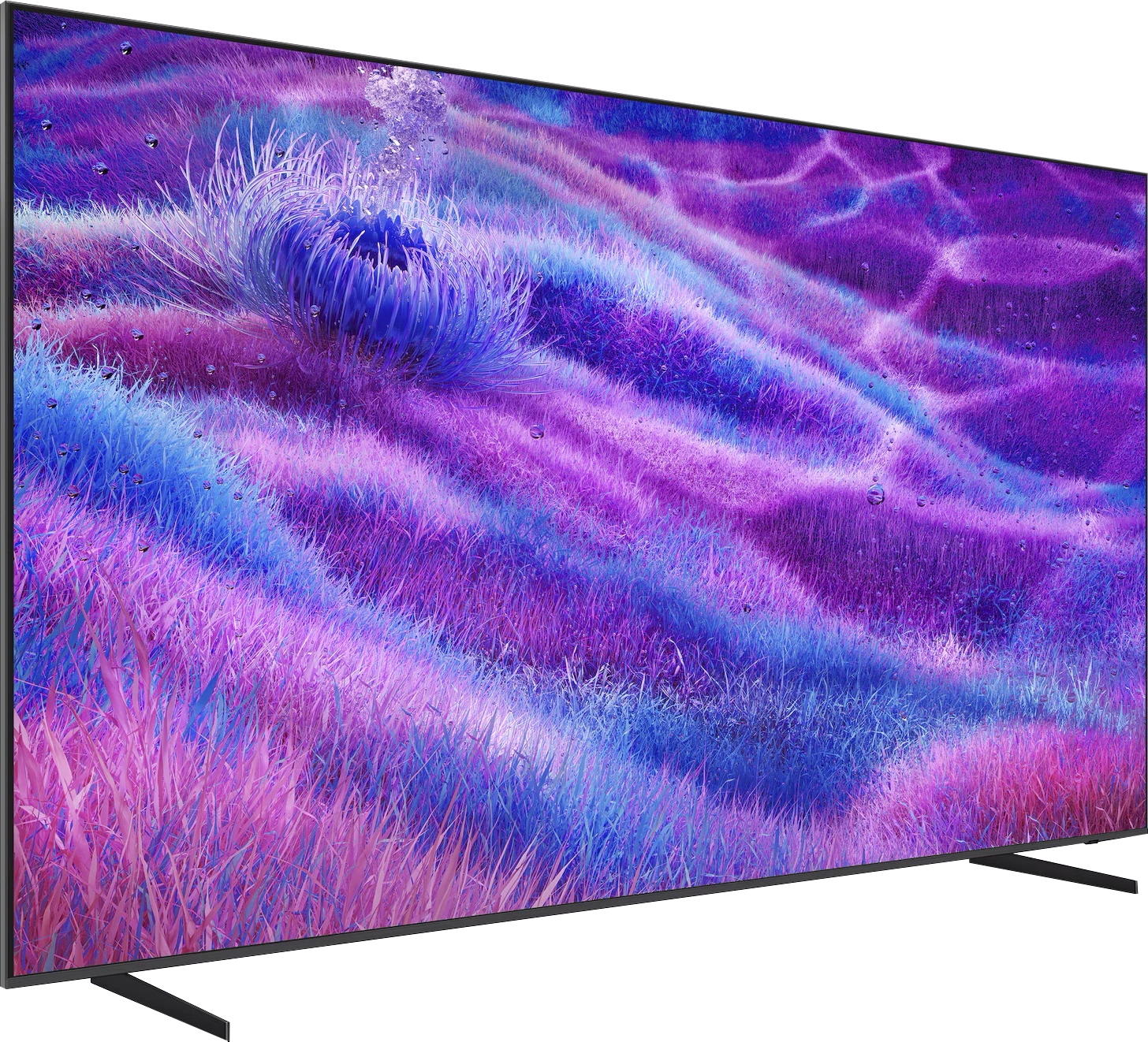
Panel type: LCD VA
Resolution: 3840x2160
System: VIDAA
Model year: 2025
Complete the survey to find out the result

Panel type: LCD VA
Resolution: 3840x2160
System: Tizen
Model year: 2025
Complete the survey to find out the result

Overall rating
7.2
7.4
Movies and series in UHD quality
6.7
7.2
Classic TV, YouTube
6.8
7.0
Sports broadcasts (TV and apps)
6.5
6.6
Gaming on console
8.0
8.6
TV as a computer monitor
8.6
8.6
Watching in bright light
6.2
7.0
Utility functions
8.9
7.7
Apps
7.7
8.7
Sound quality
7.2
6.7
Complete the survey to find out what fits your preferences
Advantages
Great contrast and deep black
Very good smoothness of tonal transitions (close to reference level)
High brightness
Supports 4K 144 Hz and even 240 Hz in Full HD
VRR, ALLM, G-SYNC – a full package for gamers
Low input lag
Pleasant sound with a light bass
Many classic TV functions built into the VIDAA system
HDR brightness up to 1300 nits
Good black levels - MiniLED with a VA panel
Fast 144 Hz panel and 4 HDMI 2.1 ports
Many features for gamers: VRR, ALLM, and great gamebar
Low input lag (<10 ms)
Fast Tizen operating system with SmartThings support
Supports Dolby Atmos
Disadvantages
Lack of support for HGiG (hinders HDR setup on consoles)
Brightness management issues
Poor viewing angles – typical for VA panels
Closed VIDAA system – missing some applications
Poor viewing angles
Modest number of dimming zones for a 100" screen
No Dolby Vision and HGIG
Our verdict
QN80F is the first "eighty" from Samsung available in a 100-inch version (previously "only" 98 inches 😉) and it is also the model that has made it into the series with Mini LED backlighting. And it must be admitted that at this scale, it performs really well. Although the number of dimming zones is not impressive considering such a huge screen, the contrast and blacks are at a solid level, and combined with high brightness, the TV can deliver great experiences in HDR movies and series. The 144 Hz panel ensures smooth motion, and the full set of features for gamers – VRR, ALLM, or Game Motion Plus – makes it hard to define the QN80F as anything other than a screen designed for both console and PC. Additionally, there is fast and stable Tizen, which provides access to all key applications and can act as a smart home hub thanks to the proprietary SmartThings app. Of course, there are some shortcomings – there is no Dolby Vision, no USB recording, and the viewing angles at 100 inches can be really problematic. Mini LED still has its limitations, so those expecting absolutely perfect blacks need to keep this in mind. On the other hand, given the current prices of OLEDs in such sizes, it is hard to talk about real competition.
QN80F is a versatile TV, well-crafted, and providing a lot of satisfaction on a daily basis. Looking at the history of this series, one can be sure that as soon as it appears at reasonable promotions, it will be one of the most interesting offers in its class. And if Samsung refines the minor shortcomings with updates, this 100-inch beast could prove truly difficult to beat just like its smaller variants.
TV appearance




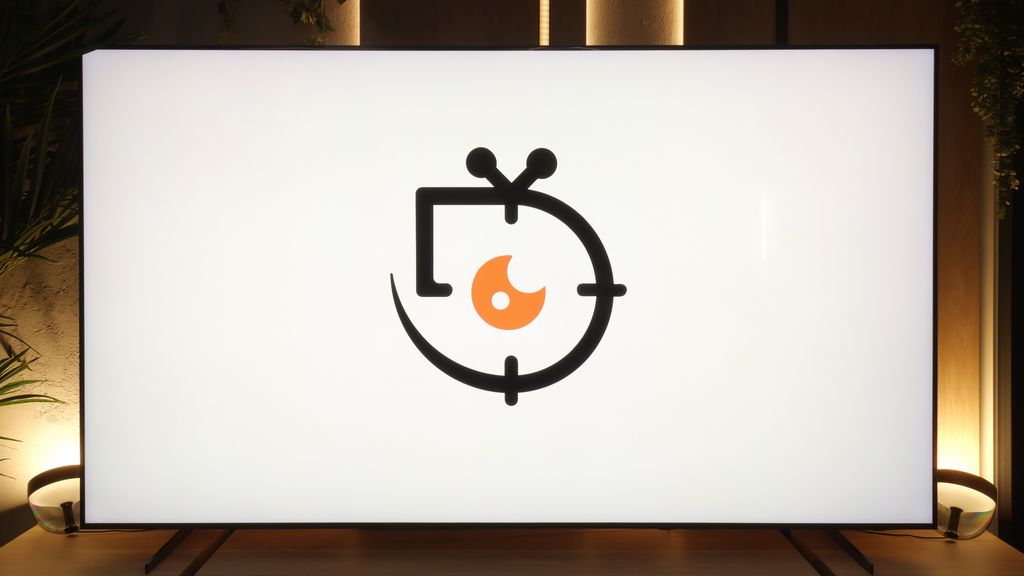

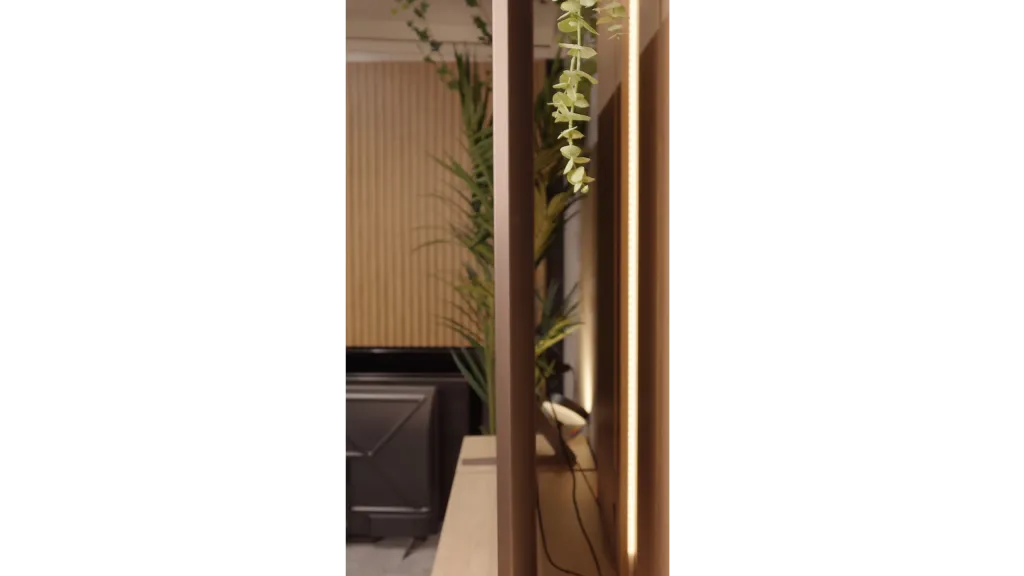
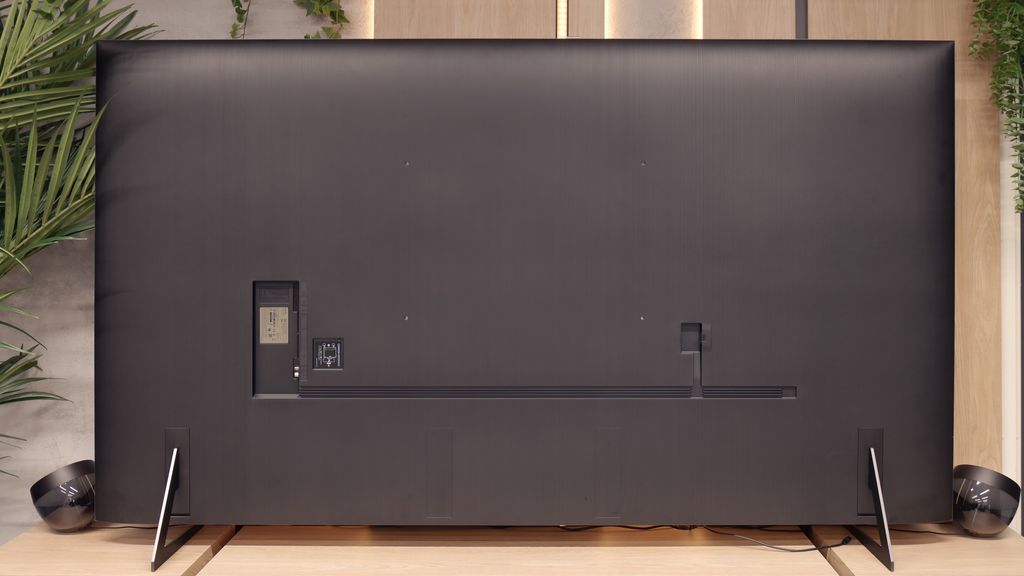
Contrast and black detail
7.5/10
7.1/10
Local dimming function: Yes, number of zones: 220 (10 x 22)
Local dimming function: Yes, number of zones: 120 (10 x 12)
Contrast:

Result
278,000:1

Result
28,800:1

Result
11,100:1

Result
10,800:1

Result
6,250:1

Result
94,400:1

Result
12,650:1

Result
31,750:1

Result
7,350:1

Result
3,000:1
Halo effect and black detail visibility:

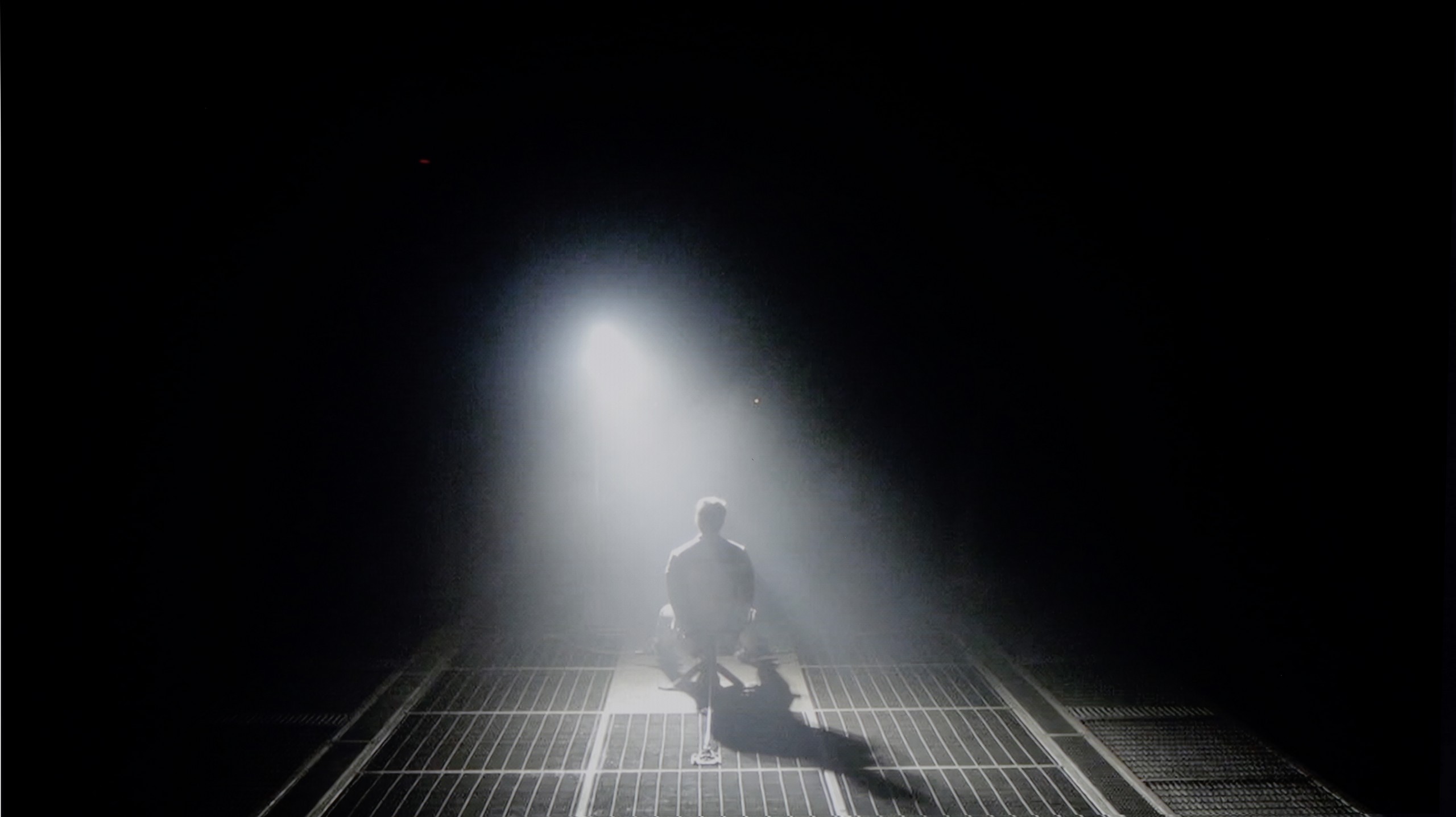
The U7Q is a television with Mini-LED backlighting – just like the PRO version. The difference? The version without the suffix simply has fewer dimming zones. In our 65-inch model with a VA panel, we counted 220 of them. And although this doesn't make as much of an impression as in the U7Q PRO, it still looks very good on paper for this price range. Alright, but how does it perform in practice? Surprisingly well. The contrast in the U7Q can reach up to 300,000:1, which provides a really solid black effect. In many scenes, it's hard to find fault – the image has depth, and the highlights are well separated. Of course, Mini-LED is not OLED – so there are certain limitations. In very challenging scenes with a lot of dark details, the television sometimes either "eats" them, leaving a nice black, or slightly brightens the background, which can cause a halo effect. This is normal in this technology and must be taken into account. Despite these minor drawbacks – the contrast in the U7Q performs really well.
The QN80F belongs to the NeoQLED family, which consists of Samsung TVs based on mini-LED technology. In practice, this means local dimming zones that are intended to improve contrast and light separation. In the case of the 100-inch version, we have a VA panel combined with about 120 zones – a rather modest result for such a large surface, although it must be acknowledged that it still translates into noticeably better results than in smaller screens. In its best cinematic scenes, the contrast can be really strong – five-digit values are not an exaggeration, and the lights separate from the blacks in a way that makes a significant impression at first glance. However, you cannot deceive physics. Since such a huge screen must "work" with a relatively small number of zones, there are moments when the TV struggles with image control. For example, when a multitude of bright, small elements appears on a black background in the final scene of a movie, there are visible halos around them. This shows that even with a refined algorithm, mini-LED still has its limitations. Generally, however, the contrast can be considered very good, and in everyday viewing, most users will be fully satisfied. One just has to remember that this model will not provide absolute blacks, known from OLEDs. The same goes for any LCD TV.
HDR effect quality
4.6/10
6.5/10
Luminance measurements in HDR:

Result
521 nit

Result
160 nit

Result
351 nit

Result
98 nit

Result
674 nit

Result
1150 nit

Result
721 nit

Result
875 nit

Result
377 nit

Result
849 nit
Scene from the movie “Pan” (about 2800 nits)

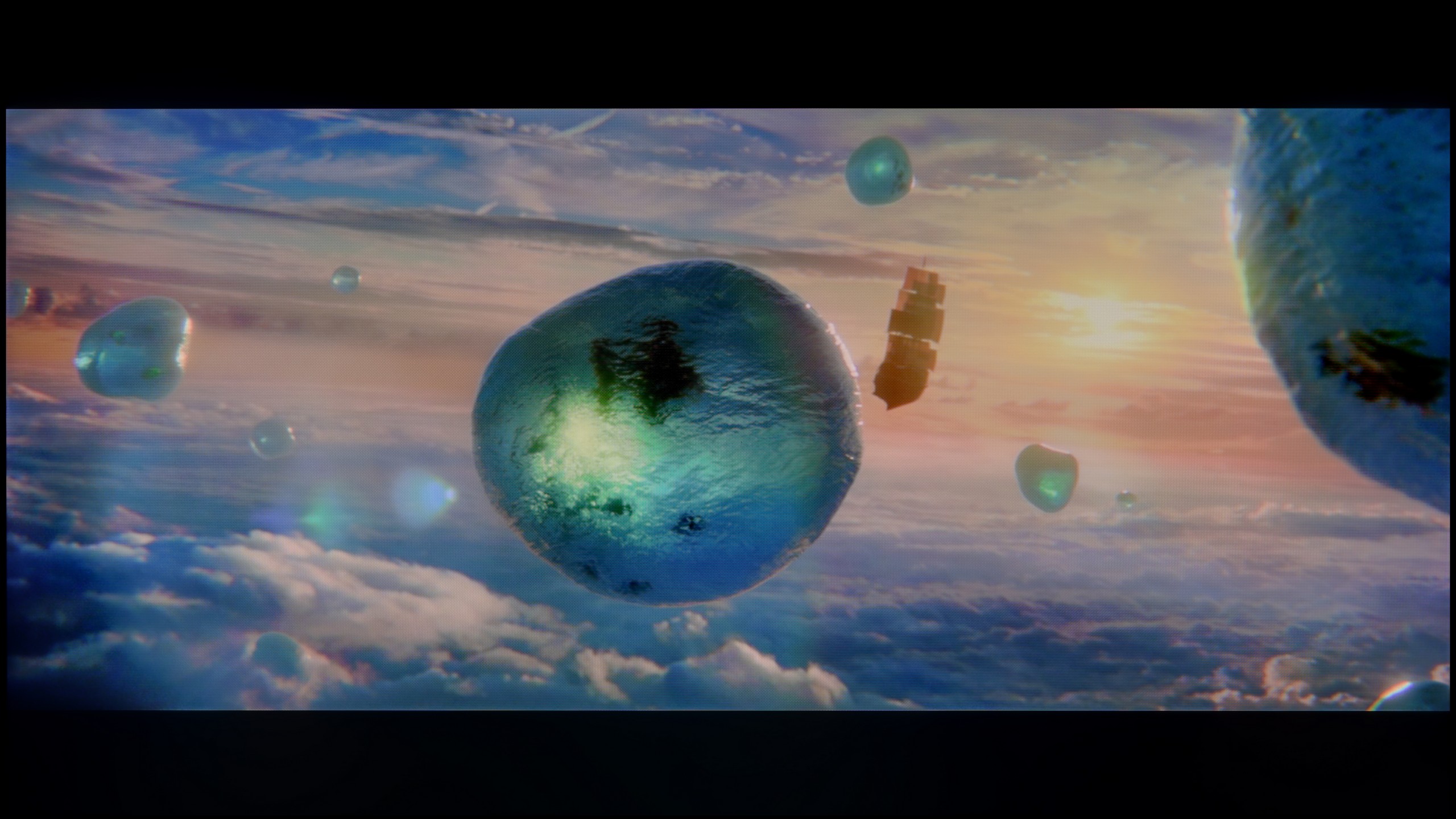
Scene from the movie “Billy Lynn” (about 1100 nits)

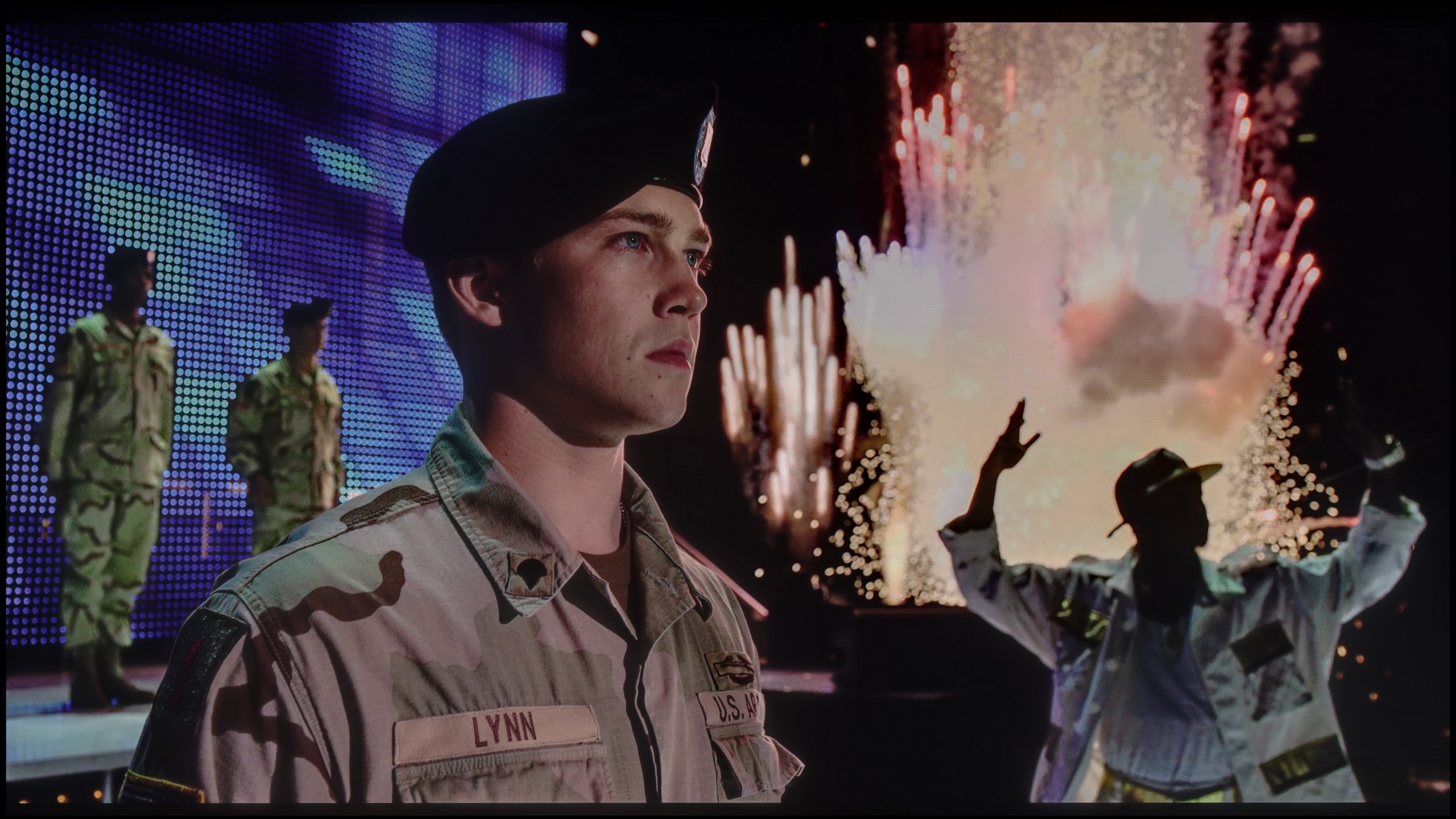
Static HDR10

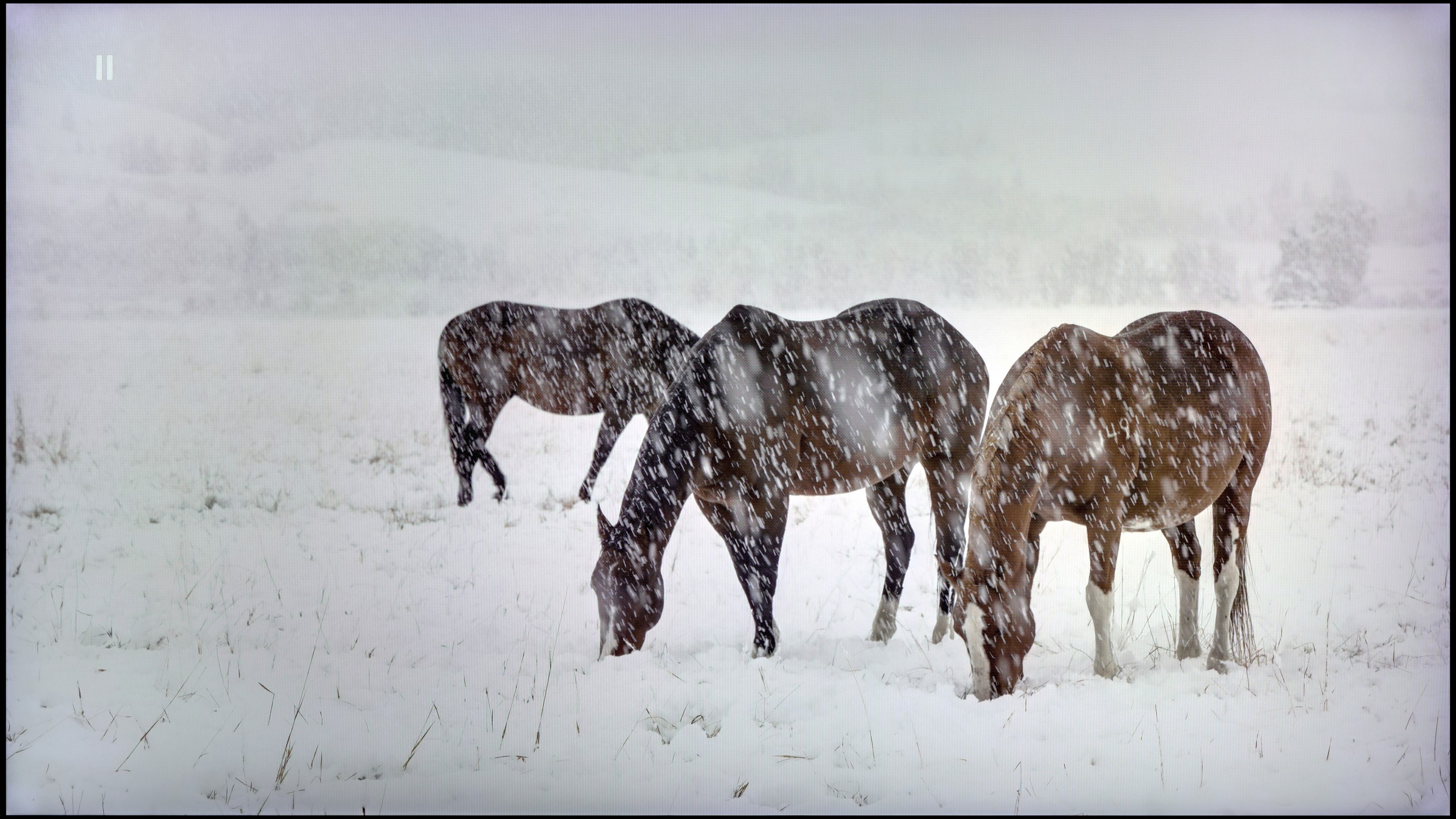
Dynamic: Dolby Vision
Dynamic: HDR10+


HDR luminance chart:
Samsung QN80F 100"
HDR luminance
Hisense U7Q
HDR luminance
Since the algorithms responsible for blacks are performing quite well, we expected a similarly good effect when it comes to brightness and overall HDR quality. Unfortunately – here we have to disappoint you a bit.
The U7Q is quite a bright TV – in optimal conditions, it can reach around 800 nits, which indeed impresses on some screens, especially in scenes like those from the movie The Meg. Bright segments can really shine, and the HDR effect is noticeable. The problem arises when very small, bright elements appear on a dark background – for example, in Sicario 2 or in the second scene of the movie Life of Pi. In such moments, the dimming algorithms operate too aggressively. Yes, the blacks look great then, but the brightest points can almost completely fade, causing the HDR effect to disappear and details to be barely visible. That's just the nature of this technology in this price segment.
As a consolation, it's worth adding that the U7Q is advertised as a QLED TV (in practice, a PFS layer is used, which works very similarly), and it is indeed capable of displaying a wide color palette – with DCI-P3 coverage at around 94%, that's a very good result for this class.
When it comes to HDR in Filmmaker mode, the QN80F can make a great first impression on you. Our lab tests showed that under the best conditions, the TV can achieve brightness exceeding 1200–1300 nits. These are truly remarkable results, which make HDR effects in many films look incredible. The TV is simply bright enough that it doesn’t need to artificially adapt the picture – bright parts of scenes have the right "power" and actually look like a light source. Of course, the lab is one thing, and everyday viewing is another. In practice, during movie scenes, brightness usually oscillates between 700–1100 nits. These are still great values that, in most cases, give a strong sense of realism and make the lights on screen really capable of dazzling you. The problem arises in exceptionally challenging sequences, where, like almost every mini-LED, it reveals its limitations. A good example is Sicario 2: scenes with helicopters in the night sky look much weaker, and the lights lose intensity, dropping to around 370 nits, making it hard to speak of serious admiration. This leads us to the topic of colors. Although we are dealing with a QLED, the coverage of the DCI-P3 color palette is about 90%. This is fairly average for a quantum dot TV. In practice, this means that some colors may appear less saturated than we would expect, especially in demanding HDR productions.
Factory color reproduction
6.3/10
6/10


Factory Mode
After calibration


Factory Mode
After calibration
We tested the U7Q in the best possible picture mode, which is Filmmaker Mode. This mode is supposed to provide the most "filmic" experience and fidelity to the creators' intent – right out of the box. Unfortunately, even this professionally sounding name does not guarantee a perfect picture.
In our unit, the problem lay in a poorly set white balance. Both in HD and 4K content, the image had too much blue and red, giving the screen a slightly pinkish hue. It didn't look terrible, but it was noticeable – especially in bright scenes and white backgrounds. This alone could have been forgiven, but the biggest issue is the management of brightness in HDR content. The EOTF curve from the measurements confirms what we saw earlier during the scene tests: the television often dims the smallest bright elements too much, causing them to almost disappear, or conversely – excessively brightens the brightest ones, affecting the naturalness of the image.
Samsung QN80F performs best in Filmmaker mode, which is designed to faithfully convey the creators' intentions. And indeed – it is a mode in which the TV showcases its potential. But let’s not deceive ourselves, it is far from perfect. In SDR content, a problem with white balance became apparent. Slight deficiencies in green and a clear excess of red caused the screen to take on a pinkish hue. You don’t even need measuring tools to notice this – in everyday viewing, the slightly shifted color palette could be quite noticeable, and in color checker tests, colors were even "jumping" out of their reference fields. With HDR content, the situation was a bit better, as the white balance was closer to ideal, but another problem emerged – brightness management. The EOTF curve often caused the image to become too bright, which spoiled the perception of contrast, and in dynamic scenes led to a slight "flickering" in the reception. We actually already mentioned this in the sections about black levels and HDR. The good news, however, is that Samsung provides a lot of tools for improvement. The QN80F allows for really detailed calibration, including a 20-point white balance. And since the manufacturer left us so many options, we decided to see how the TV would perform after solid corrections.
Color reproduction after calibration
7.4/10
8.3/10

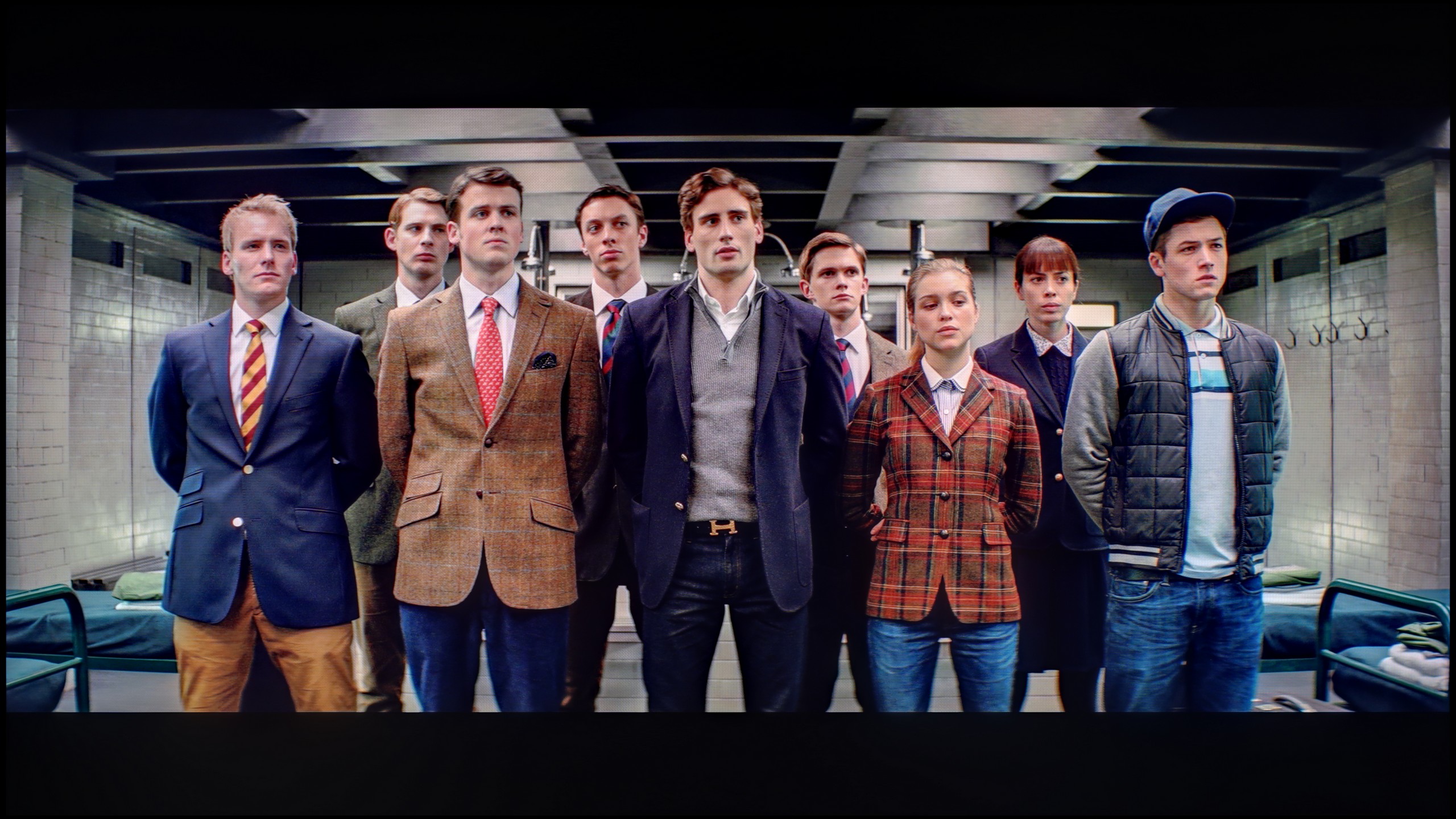

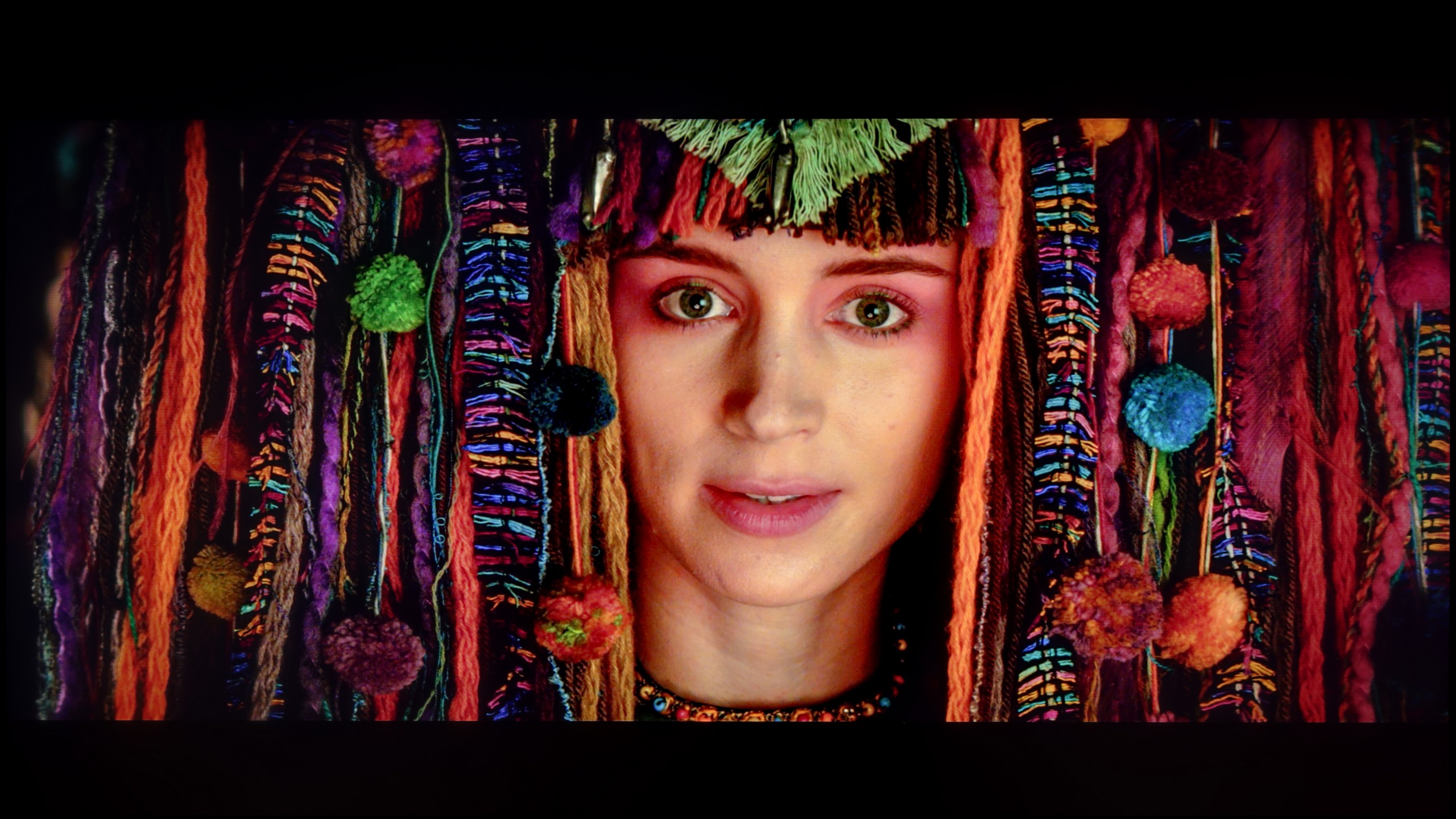
Thanks to specialized tools, we managed to correct the color quality in SDR content to nearly perfection. In materials with lower dynamics, delta E errors dropped below 0.5, which can be considered an almost reference result. The image on television, YouTube, or classic Full HD looks really good after calibration. Well, but where couldn’t we improve the image so easily? Primarily, it concerns HDR quality content. While we managed to somewhat "tame" the white balance and eliminate pink hues in most scenes, unfortunately, we did not have full control over brightness management. We set the local dimming settings according to the best observations – SDR: Medium, HDR: High – but the U7Q still did everything a bit its own way. There were still cases of overly strong dimming or brightening of details that the calibration simply couldn't eliminate. And although the overall reception of the content is much better, it must be taken into account that the U7Q will always have something to say at the end "but."
After calibrating the QN80F, it immediately showed that it is capable of much more. The pink tint that could previously spoil the reception has disappeared, and the white balance finally looks as it should – natural and without excessive deviations. The colors have gained depth, and the image has become more saturated and consistent, making movies simply more enjoyable to watch. It's a bit like removing a light haze from the screen – suddenly everything seems sharper and clearer. Brightness management has also improved. The television no longer gets lost so easily in dynamic changes, and the EOTF graph shows that the curve tracking is much more stable. Of course, there are no miracles – the limited number of zones still means that small, bright elements can be slightly brightened, but that is due to the construction itself, not the settings. After this adjustment, the QN80F feels like a more mature piece of equipment, and watching movies finally provides the satisfaction one expects from a television even in the higher class.
Smoothness of tonal transitions
9.9/10
9/10

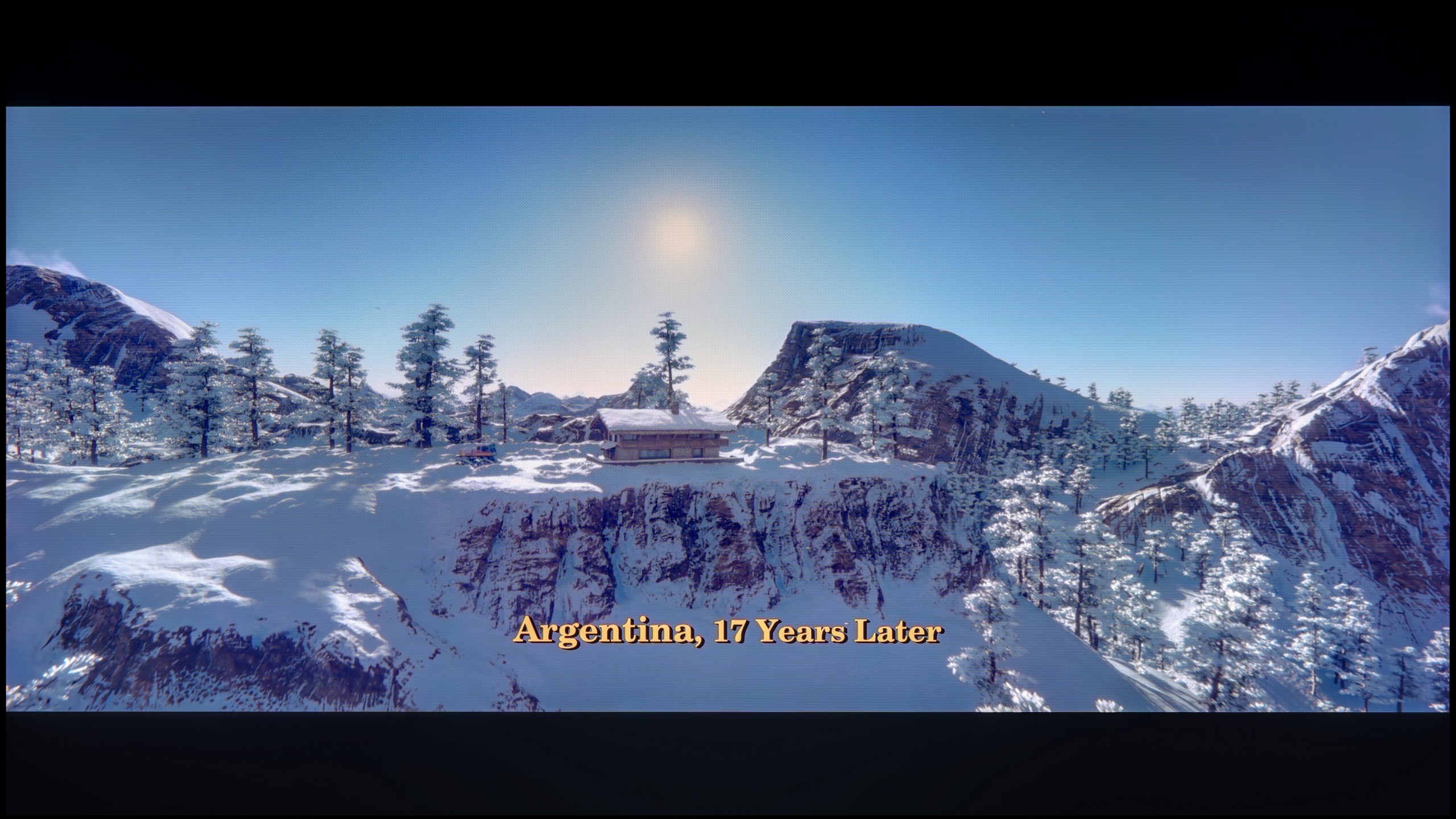



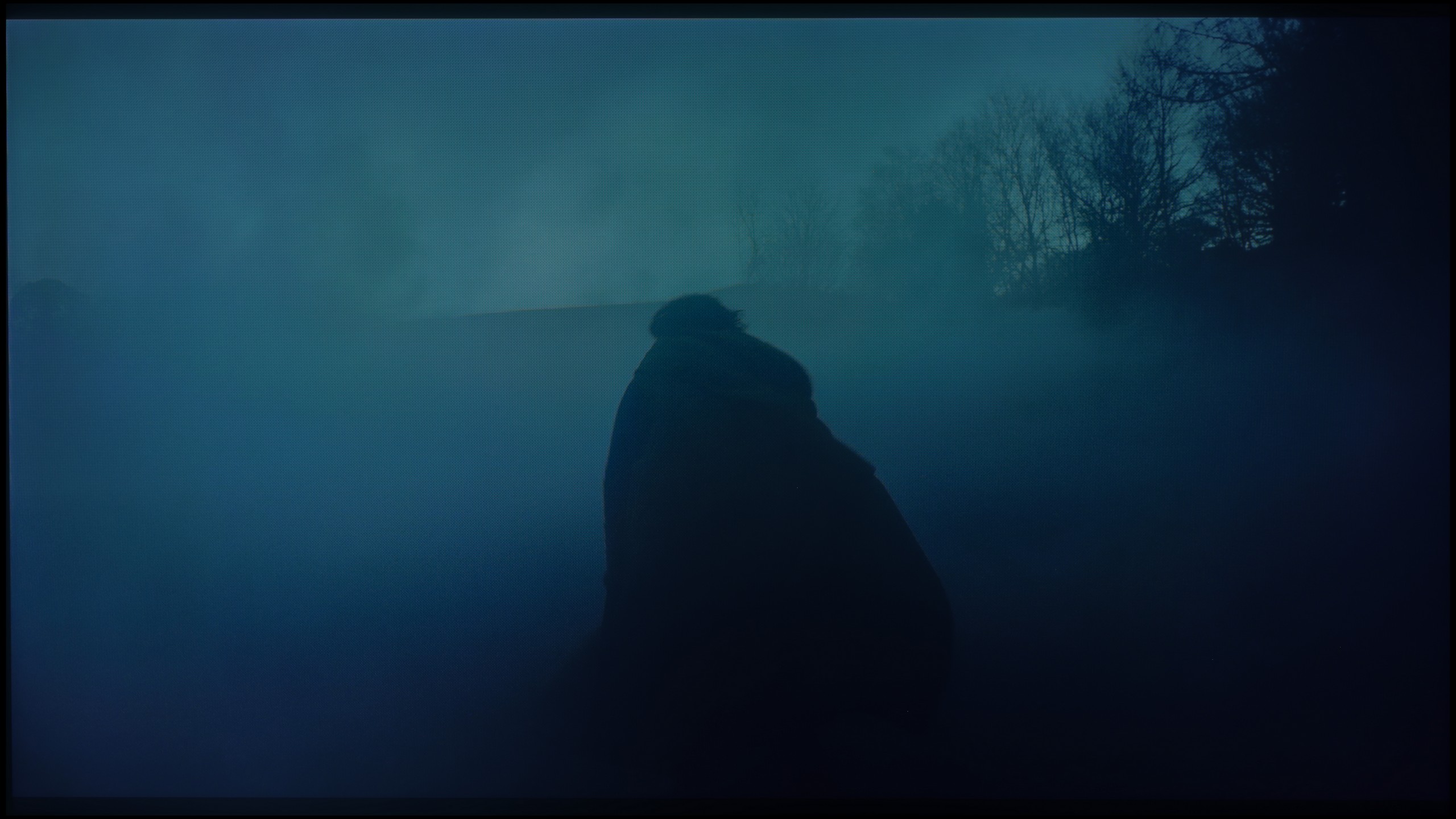

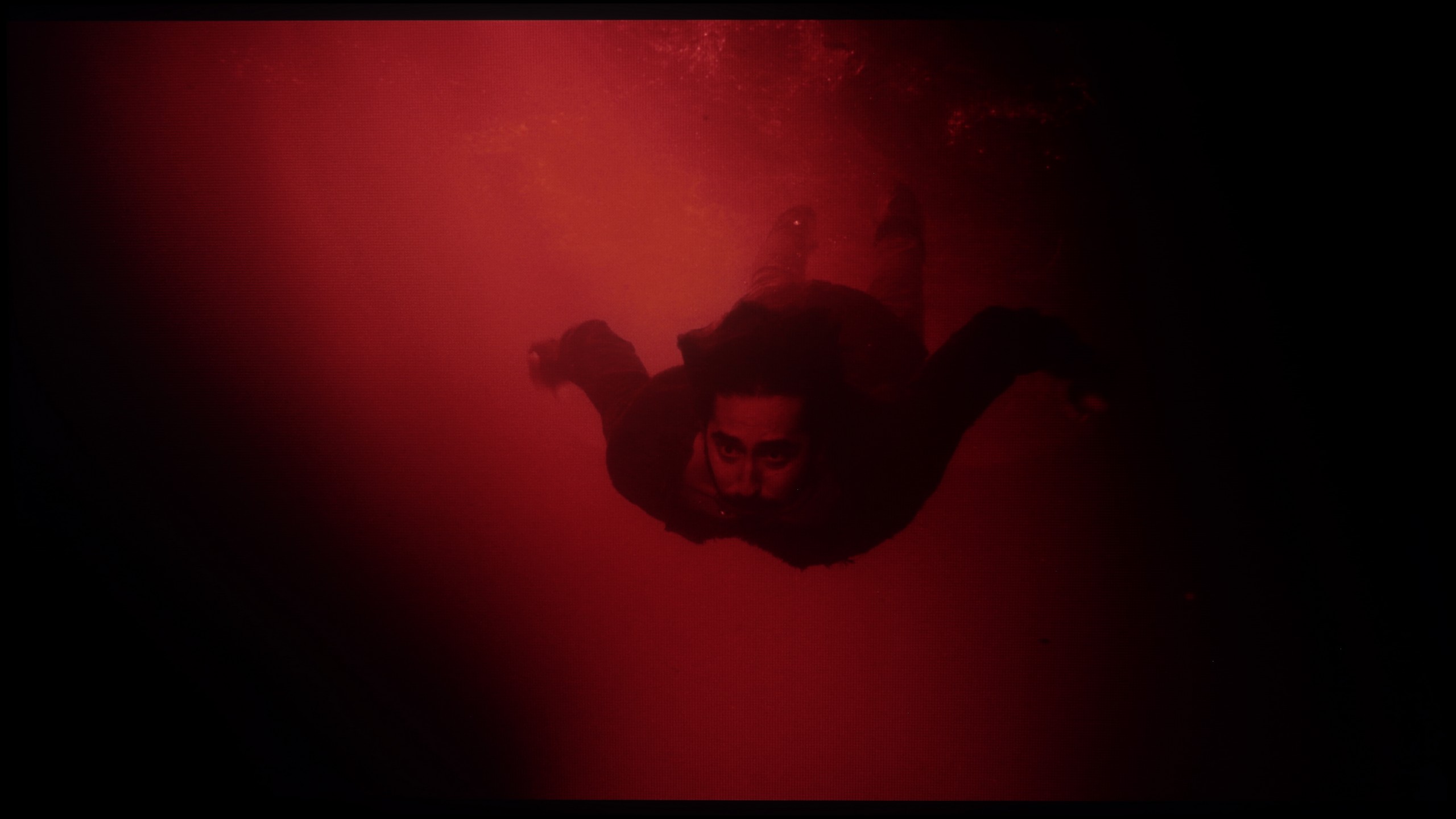




The U7Q performs exceptionally well when it comes to tonal transitions – we can confidently say that it reaches almost reference level, which is why in this category, the TV receives one of the highest possible ratings from us. The color blends are smooth, clean, and without visible bands. In most scenes, everything looks simply perfect, and any potential minor imperfections may only appear in very specific shots – although we hardly noticed them during testing.
In terms of the smoothness of tonal transitions, meaning blending colors into one another, the QN80F performs really well. The color gradients are smooth, the image doesn’t break into artificial bands, and the sky or vast shadowed surfaces look as they should – without strange spots or disturbances. It particularly excels in scenes with dark tones, where many televisions tend to lose their way and generate ugly artifacts. Here, everything remains coherent and clear. Indeed, in the brightest areas, one can sometimes notice slight banding, but that’s a detail that only very discerning viewers analyzing the image frame by frame will catch. In everyday use, there is practically nothing to complain about. The QN80F provides a sense of assurance that tonal transitions will not be a distracting element.
Image scaling and smoothness of tonal transitions
6/10
7/10
Smooth transition function

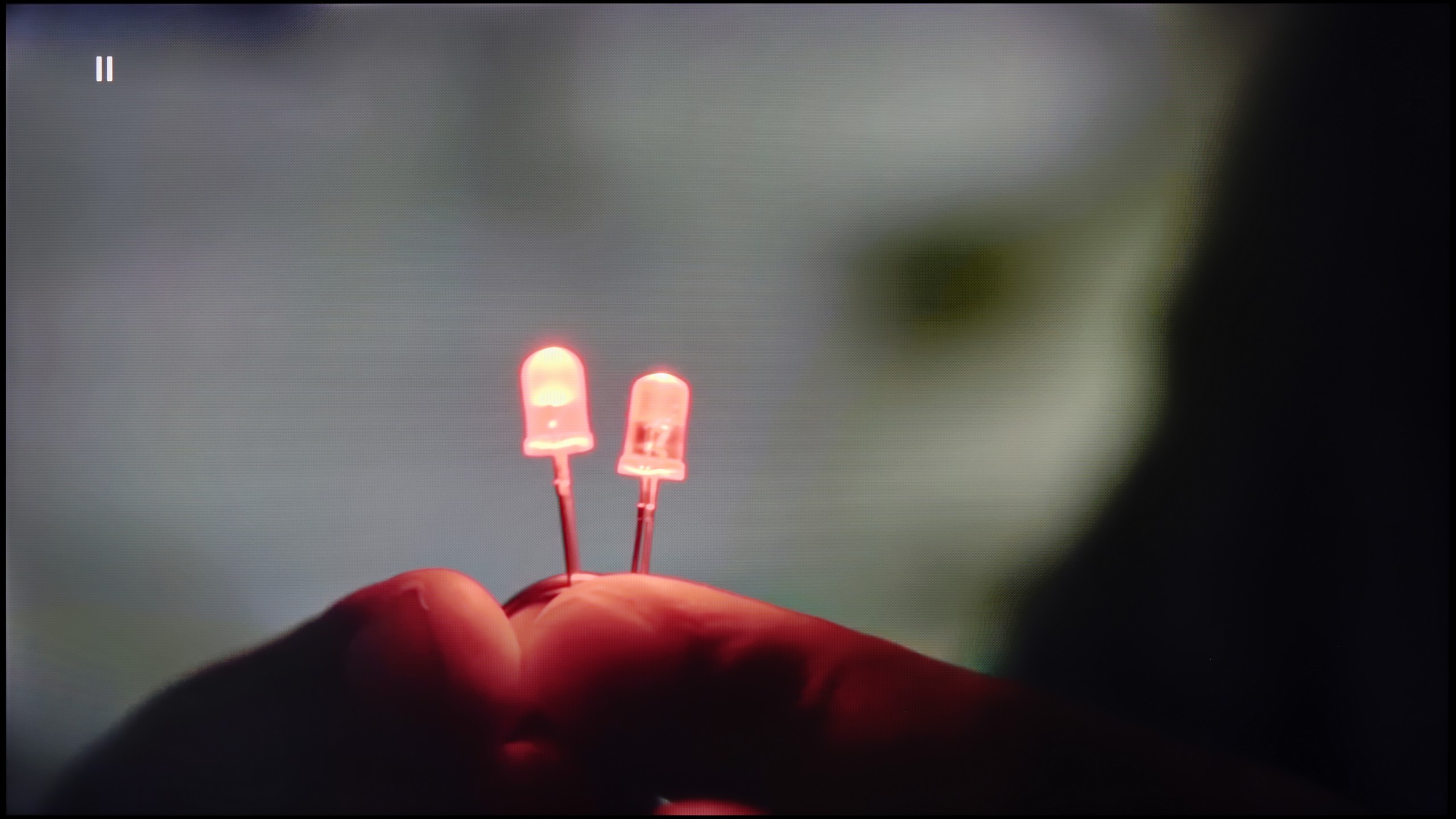
Image without overscan on the SD signal

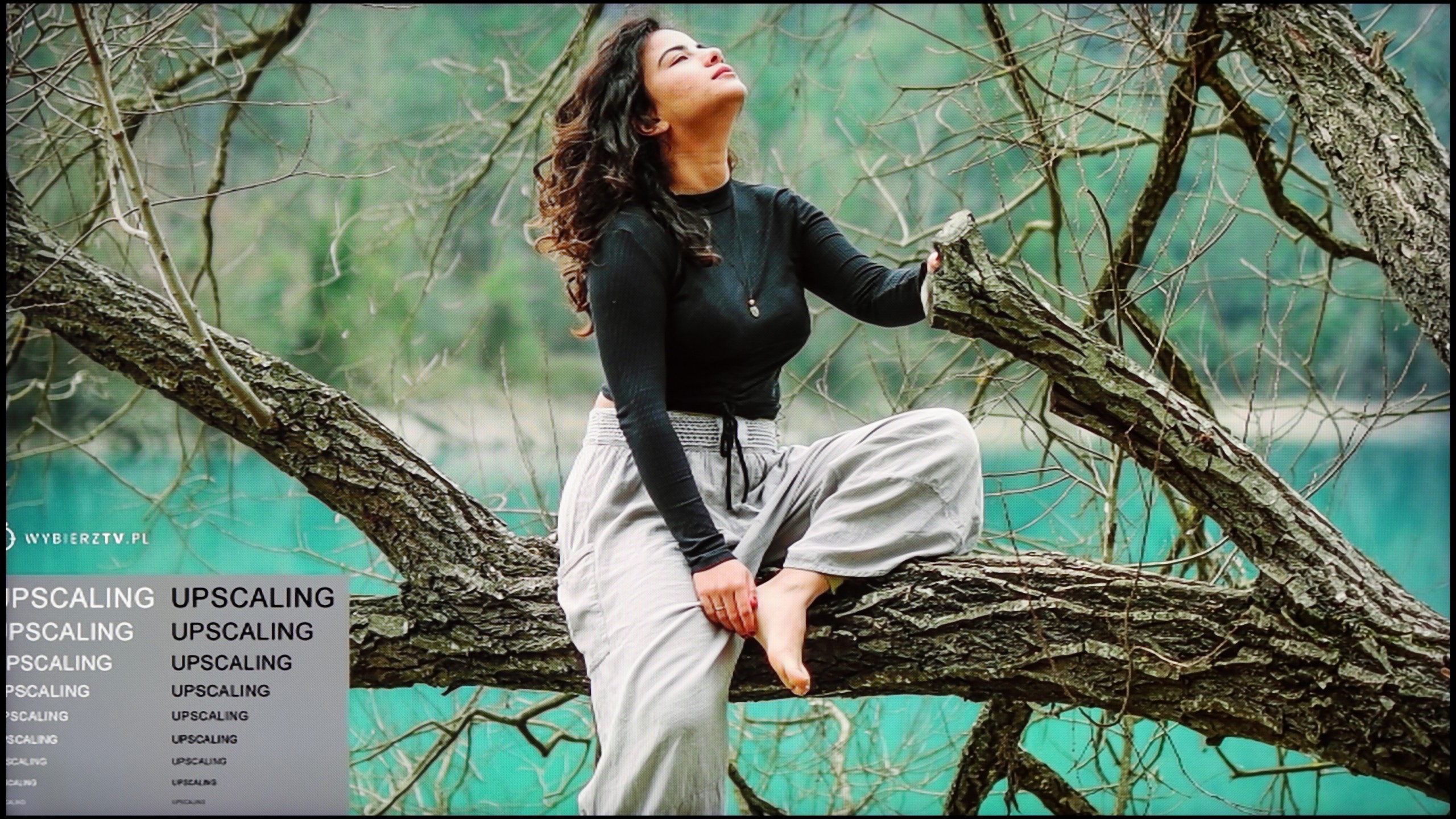
There are situations where we would like to smooth out tonal transitions a bit, especially in older materials – those that have limited source quality. The U7Q is equipped with a feature called “Smooth and Gradient Image,” but unfortunately… it works very poorly. In the “Low” option, the effects are practically unnoticeable, and other settings smooth out details but do not improve tonal transitions. The only plus is that the feature does not interfere with film grain, so it does not ruin the natural structure of the image.
Fortunately, content scaling performs quite well. The image is not overly sharpened, there is no artificial clarity – and although it is known that this is not the level of high-end televisions, the U7Q handles displaying really old content in a completely acceptable manner without any problem.
With lower quality materials, such as YouTube videos or older television recordings, the QN80F can showcase its stronger and weaker points. If strange color transitions or artifacts start appearing on the screen, it's worth using the noise reduction function. The best setting is at the "medium" level – it smooths out the problematic segments without blurring the entire image. However, one compromise must be kept in mind: this function always removes film grain. If someone enjoys its presence in older productions, it's better to leave the reduction turned off because, regardless of the setting, the grain simply disappears.
Resolution scaling, or upscaling, is another strong point of Samsung. The QN80F may not be the best TV on the market, but it performs very well in its price range, which is very important for such a large size as a 100-inch screen. Even low-quality materials can gain a second life – the image becomes sharper, more readable, and overall much more pleasant to view. A weak point remains overscan, or slight trimming of edges in very low resolutions (e.g., 576p), which has been a longstanding issue for Samsung. Fortunately, in everyday viewing of HD and 4K content, this practically doesn’t matter anymore.
Blur and motion smoothness
7.5/10
7/10

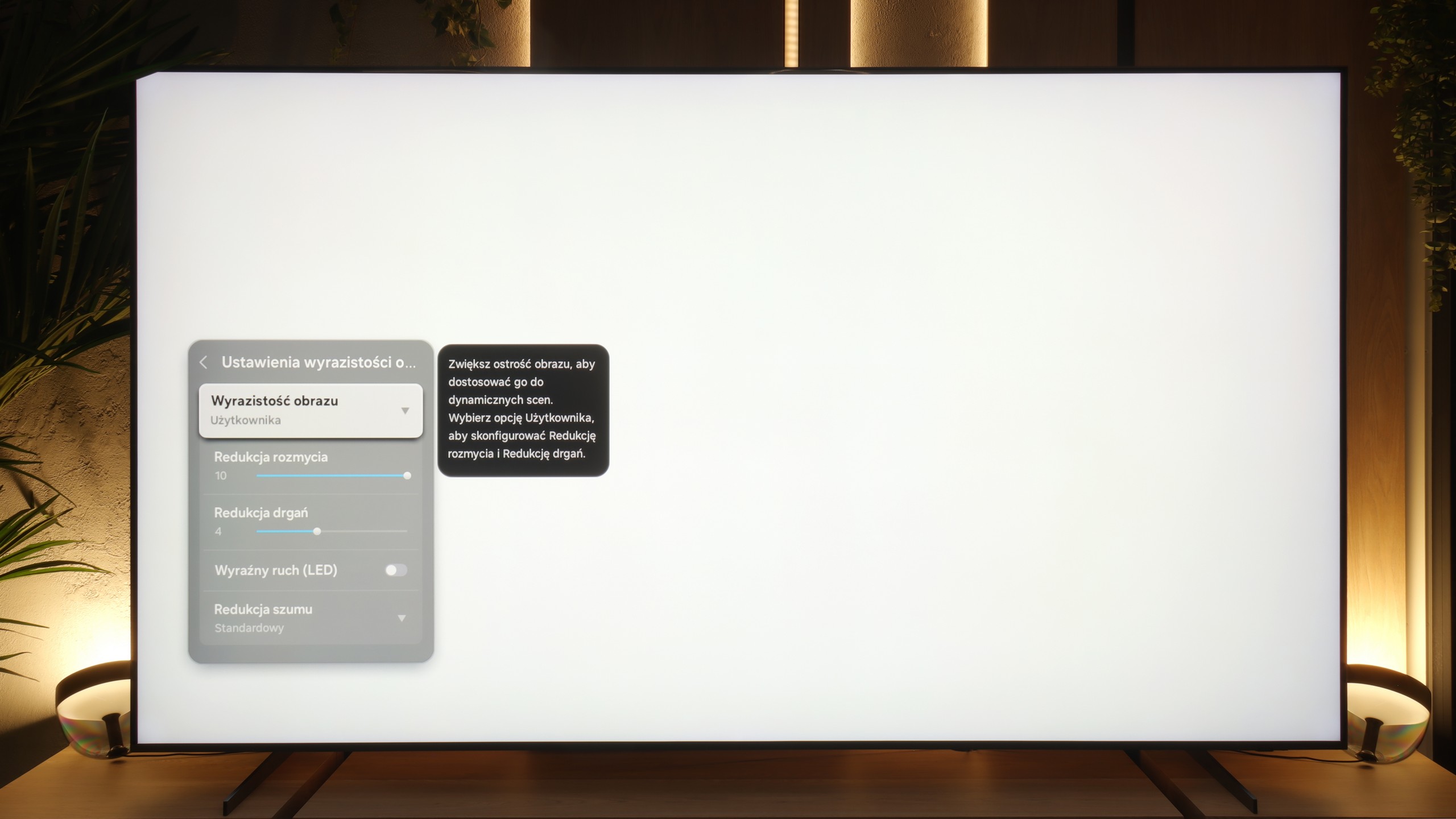
Blur (native resolution, maximum refresh rate):





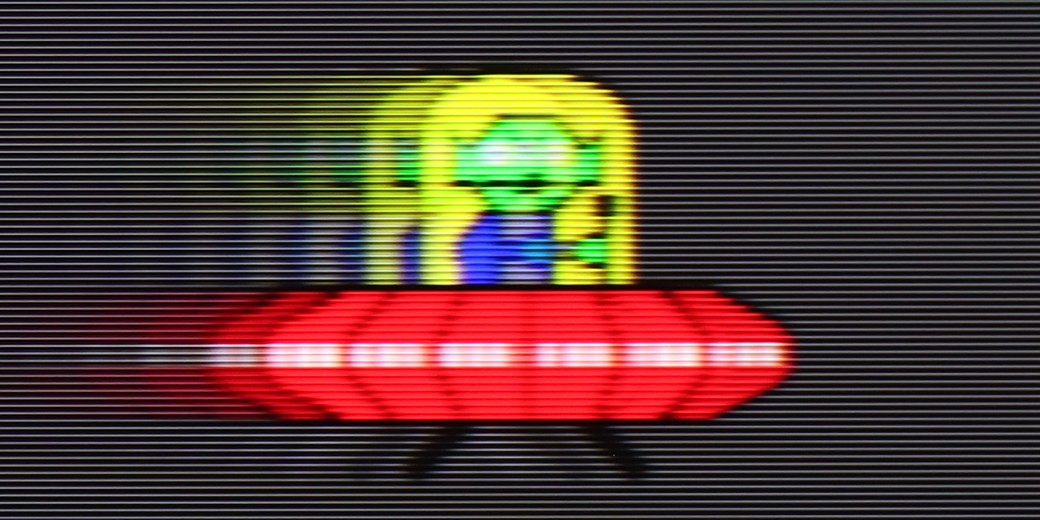
Blur (BFI function enabled):



Image flickers in this mode



Smużenie (1080p 240Hz):



Smużenie (4K@144Hz):
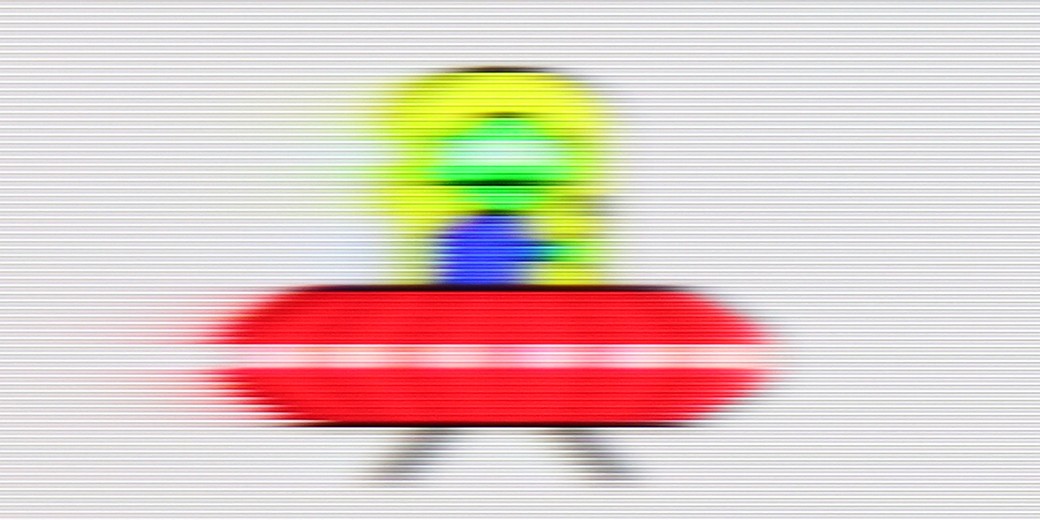
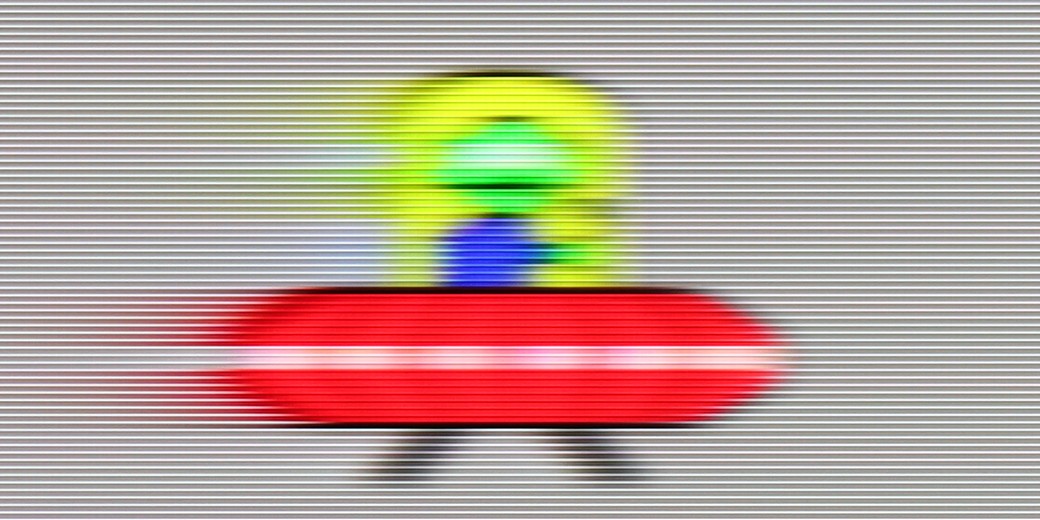
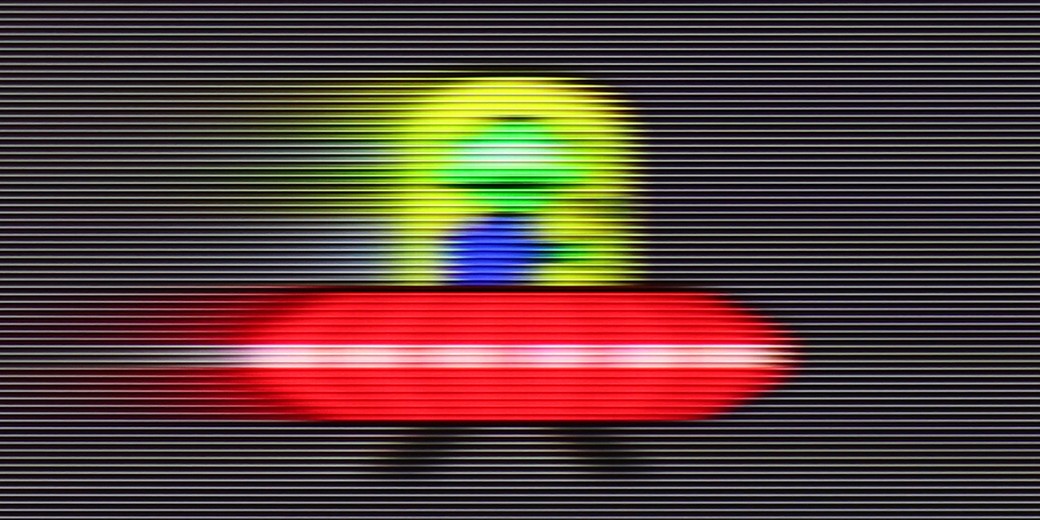
U7Q is truly a fast television, similar to its more powerful version "PRO". At a resolution of 4K, it supports up to 144 Hz refresh rate, and if someone wants even more – in Full HD you can achieve up to 240 Hz! This will mainly benefit PC gamers, but it’s worth appreciating – this is a rare feature in this price segment. Right from the start, it’s clear that U7Q was created with dynamic content in mind, such as games or sports. In films, we are not left "out in the cold" either – U7Q offers the "Ultra Motion Smoothness" feature, where using two sliders you can adjust whether you want a smoother, theatrical image, or something closer to a cinematic style with a visible frame. It’s good that, like with most manufacturers, we have a choice here and can adjust it to our own preferences.
The QN80F features a 144 Hz panel, and this is evident in practice – with full refresh, the image is exceptionally smooth, and motion blur remains at an acceptable, barely noticeable level. However, this mode is mainly aimed at PC gamers. The most important reference point in everyday use remains a 120 Hz refresh rate, and here a certain discrepancy arises. During the UFO test, we noticed the blurring of contours of quickly moving objects – it looked as if the television had the BFI (Black Frame Insertion) function permanently enabled, which in practice led to an unpleasant double edge effect. We do not yet know if this is a software issue or a characteristic of this model, but in its current form, it is difficult to praise such behavior.
Console compatibility and gaming features
8.5/10
8.2/10
- ALLM
- VRR
- VRR range48 - 240Hz48 - 144Hz
- Dolby Vision Game Mode
- Correct implementation of HGIG
- 1080p@120Hz
- 1440p@120Hz
- 4K@120Hz
- Game bar

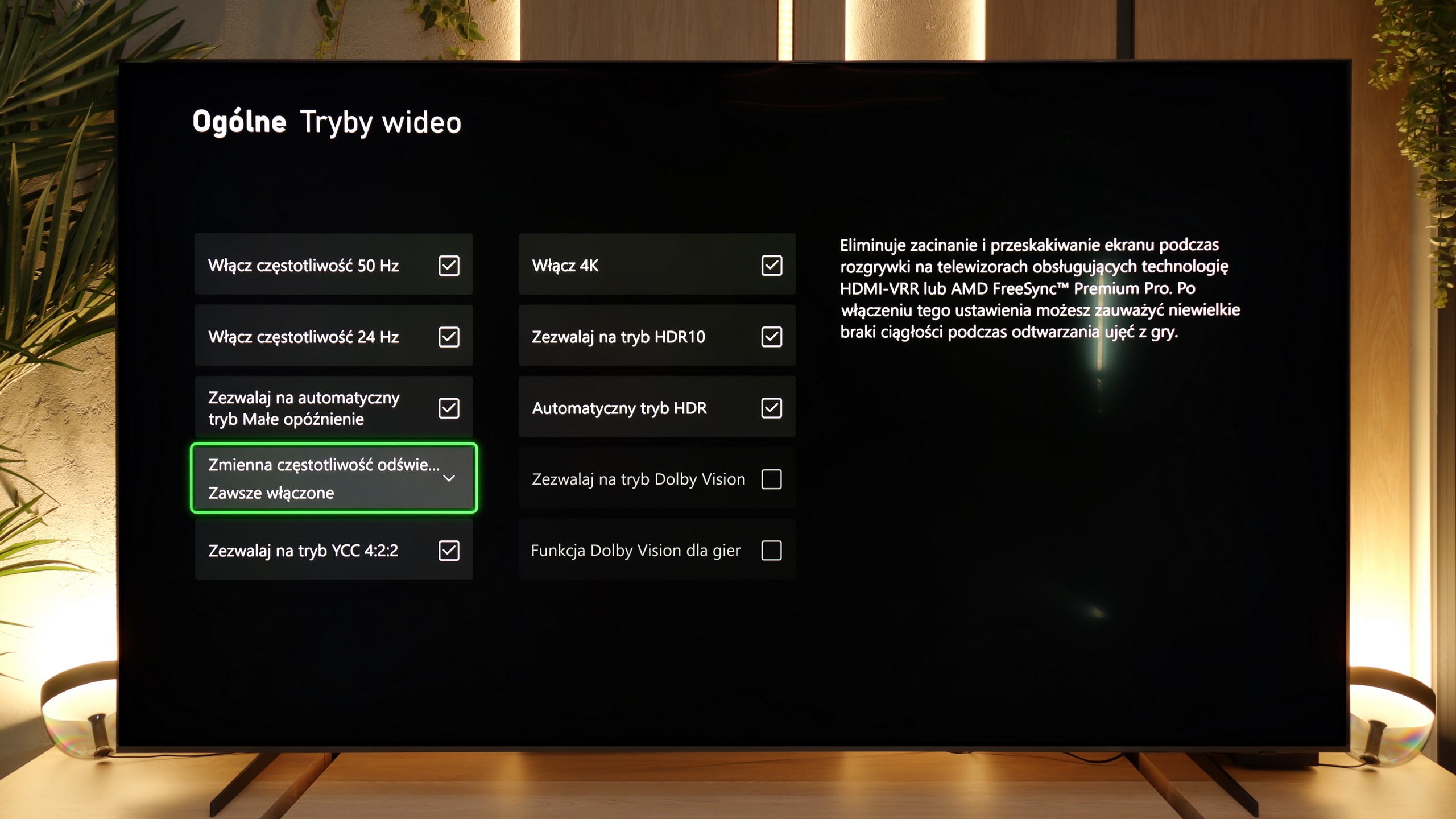

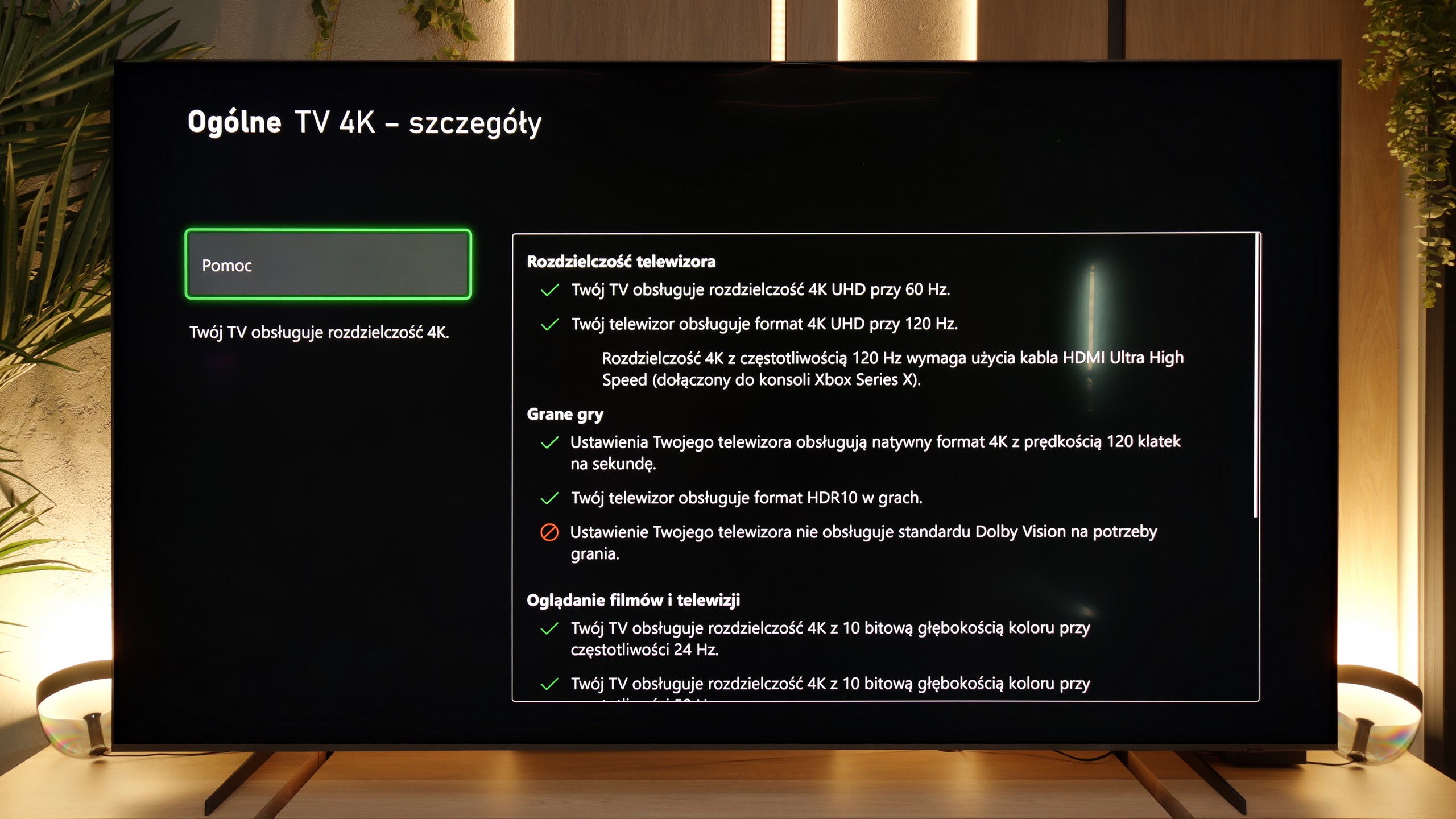

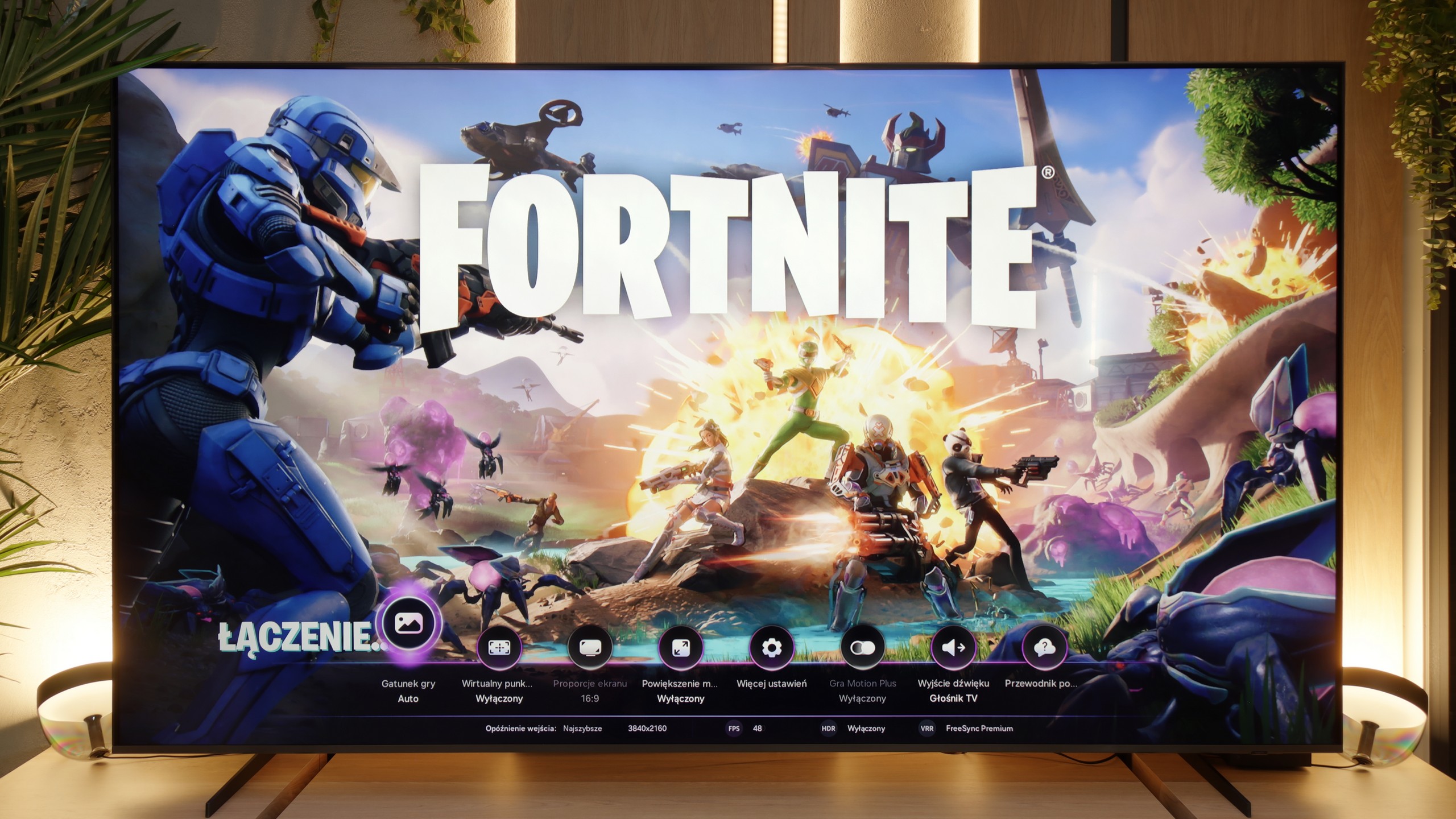

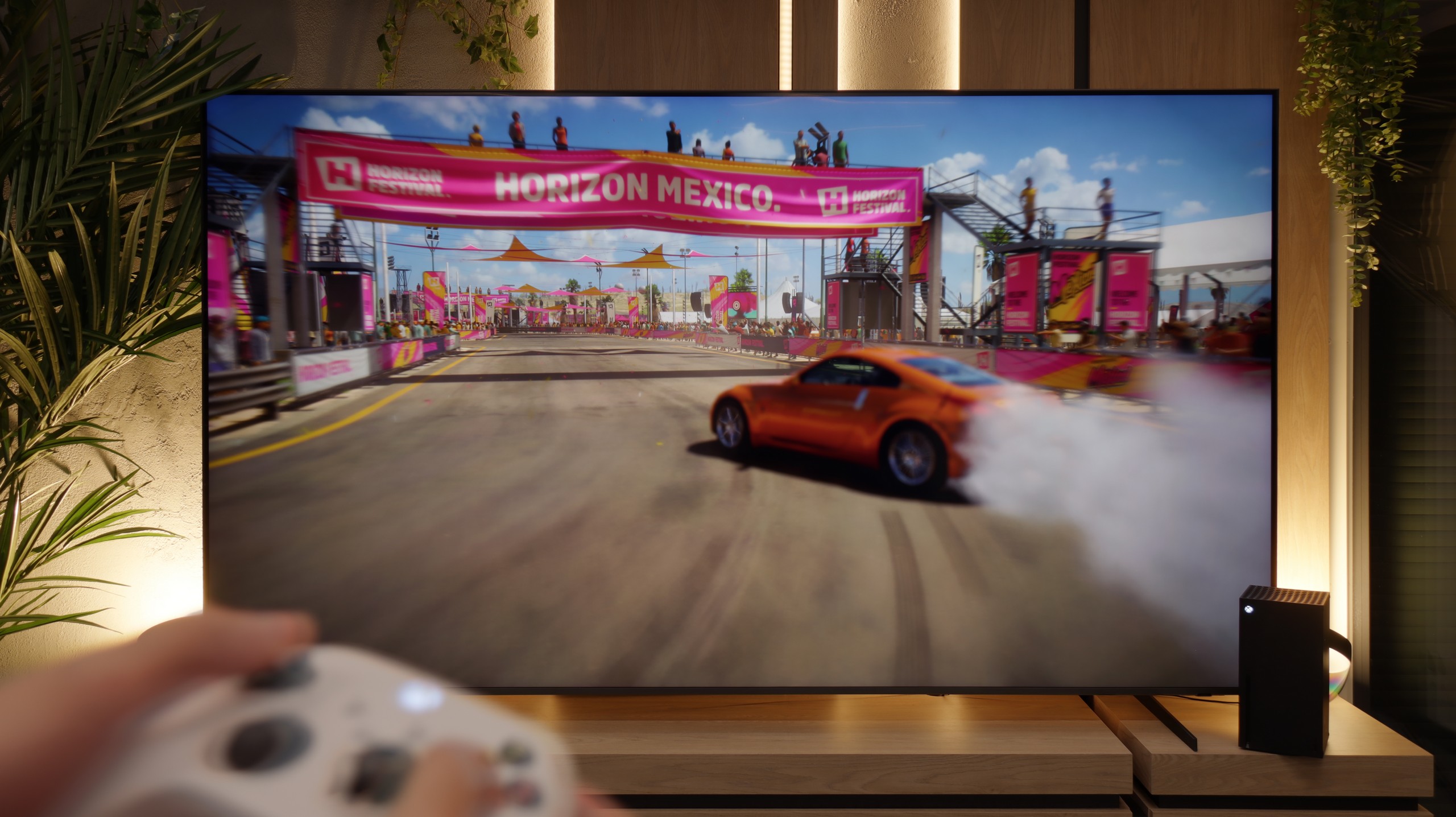
The Hisense U7Q is a TV designed for gamers – and you can see that right away based on its gaming capabilities. It has practically everything you could wish for: variable refresh rate (VRR) – check, automatic game mode (ALLM) – also check, and high refresh rates of up to 240 Hz in Full HD, as well as support for various resolutions, not just 4K. It's truly a great set of features that makes the U7Q excel in both fast-paced shooters on consoles and more demanding titles on PC. Of course – like in most Hisense models – it lacks a proper implementation of the HGiG function. That's a shame because HGiG allows you to adjust the brightness of the console to the specific TV, which in practice makes displaying HDR games according to the creators' intentions much easier. Without this, you simply have to reckon with certain limitations in the final HDR image in games.
The Samsung QN80F gives the impression of a television designed for gamers. On the list of advantages, it features a 144 Hz panel, four full-fledged HDMI 2.1 ports, full support for VRR and ALLM, and one of the best-designed game bars on the market. Additionally, there is the Game Motion Plus motion smoothing, which works even in games without actually increasing input lag, making the QN80F an absolute phenomenon in this category. In practice, this means you can enjoy smoother visuals without sacrificing responsiveness, which is a dream for many console gamers!
As usual with Samsung, Dolby Vision is missing in games, and this is no longer surprising. What surprised us much more, however, is that in the 2025 models… the HGIG feature has disappeared. It was the feature that allowed consoles like the PlayStation 5 and Xbox Series X to perfectly match HDR tone mapping to the capabilities of the television. In the current firmware of the QN80F, this option simply doesn’t exist – it looks more like a bug than a conscious decision by the manufacturer, but as of the test day, it must be noted that HGIG is unavailable. Because of this one omission, the QN80F goes from being almost the perfect television for gamers to just "almost" perfect. This is quite a pity, as Samsung has created a model that truly raises the bar in gaming hardware.
Input lag
9.7/10
9.8/10
SDR
HDR
Dolby Vision
Input lag on the U7Q is really impressive. With 120 Hz content, we recorded around 9 ms, and with 60 Hz – around 17 ms. These are outstanding results that make the TV perform excellently even in dynamic games that require quick reactions. There is hardly anything to criticize here. Of course, as is often the case, the Dolby Vision mode in games seems a bit slower compared to classic SDR or HDR. This will mainly be noticeable for Xbox Series X/S console users, which are the only ones that support Dolby Vision Gaming. Fortunately, input lag still remains below 30 ms, so in practice, this is still an acceptable level even for more demanding gamers.
Input lag is something that can ruin the entire fun, but fortunately, there's nothing to worry about with the QN80F. At 120 Hz, the lag drops below 10 ms, so it feels like the TV doesn't exist at all between the controller and the image. The response is immediate; everything happens exactly when we want it to. At 60 Hz, the result is around 17 ms – that's more, but still within the range of full comfort. In practice, console games look and operate smoothly, with no annoying lags in sight. This is the moment where it’s clear that Samsung really put effort into the gaming mode – the QN80F gives a sense of control and speed that one would expect more from a monitor rather than from a 100-inch behemoth in the living room.
Compatibility with PC
8.6/10
8.6/10

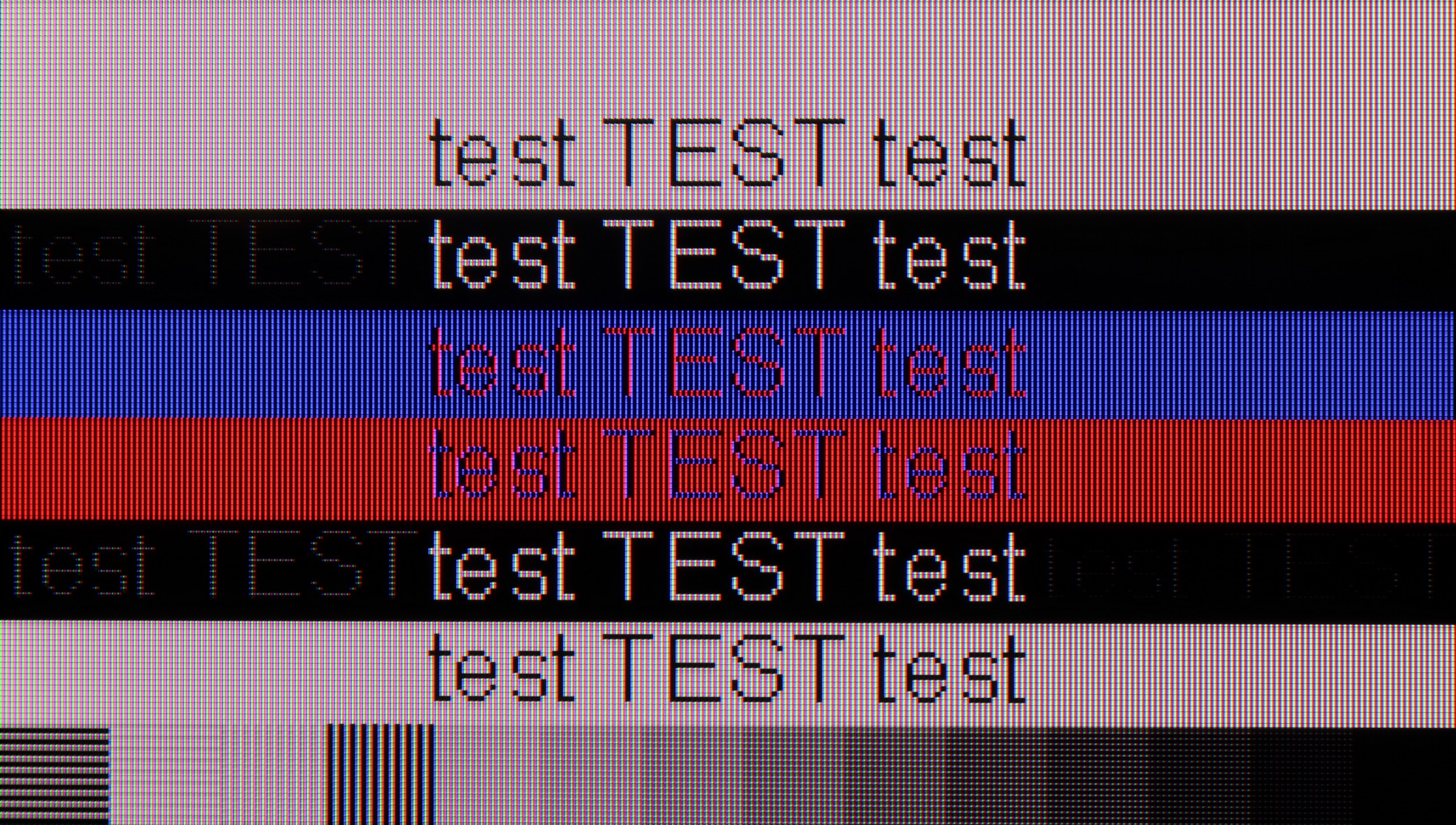
The U7Q communicates excellently with the computer. For gamers, this is great news – we have high refresh rates, low input lag, and G-SYNC support, so gaming from the PC is pure pleasure. But the U7Q also performs well in everyday tasks. If someone uses a computer for text, browsing the internet, or office work – there’s nothing to complain about. The television correctly handles chroma 4:4:4, so fonts look sharp and clear, without blurriness or strange contours. Both lowercase and uppercase letters are simply readable – just as they should be.
Cooperating with a PC on the QN80F is a bit strange. When it comes to gaming, there’s no cause for concern: we have full support for 144 Hz, both G-Sync and FreeSync work, and the smoothness is truly impressive. The problem starts when using a computer for everyday tasks – especially when we are looking at fonts instead of games. At 120 Hz, the image looks nearly flawless. The letters are readable, sharp, and the only minor detail that can be noticed is a slight dimming of thin lines. However, this is a detail that shouldn’t interfere with normal usage. Bigger problems arise at 144 Hz, which is the mode that is supposedly designed for PC users. Instead of crystal-clear fonts, a strange anomaly appears. The TV adds shadows with tiny dots, causing the text to simply look odd. Fortunately, this is more of a curiosity than a real problem. After all, it’s hard to imagine someone putting a 100-inch colossus on a desk and staring at Excel or Word sheets from half a meter away. For gaming, the QN80F is excellent, and when working normally with a PC, it’s better to just stick to the 120 Hz mode.
Viewing angles
3/10
3.3/10
The viewing angles on the U7Q are rather weak – this is simply a typical characteristic of VA panels. Straight on, everything looks very good: blacks are deep, colors are saturated, and the contrast is high. But just shifting slightly to the side causes the image to start losing quality – colors become washed out, and blacks begin to resemble dark gray. Compared to TVs with IPS panels, the U7Q performs worse, although on the other hand, it makes up for it with better contrast and deeper blacks.
The viewing angles are unfortunately a weak point of the QN80F. With smaller TVs, this can still be tolerated, but in the case of 100 inches, the flaw becomes much more noticeable. It is enough to sit slightly off to the side for the edges of the screen to appear fainter than its center. And when we try to watch something at a steeper angle, the image simply loses its charm – colors become washed out, contrast drops, and the depth visible straight on is lost. It’s a shame that with such a large screen, Samsung did not attempt to apply coatings that would widen the viewing angles. This is where it would make the most sense, as it’s hard to expect everyone in the living room to sit perfectly in front of the screen. If someone is primarily interested in wide angles, they need to look for mini-LEDs on an IPS panel – these may not have such deep blacks, but they perform much better when viewed from the side.
TV efficiency during daytime
6.2/10
7/10

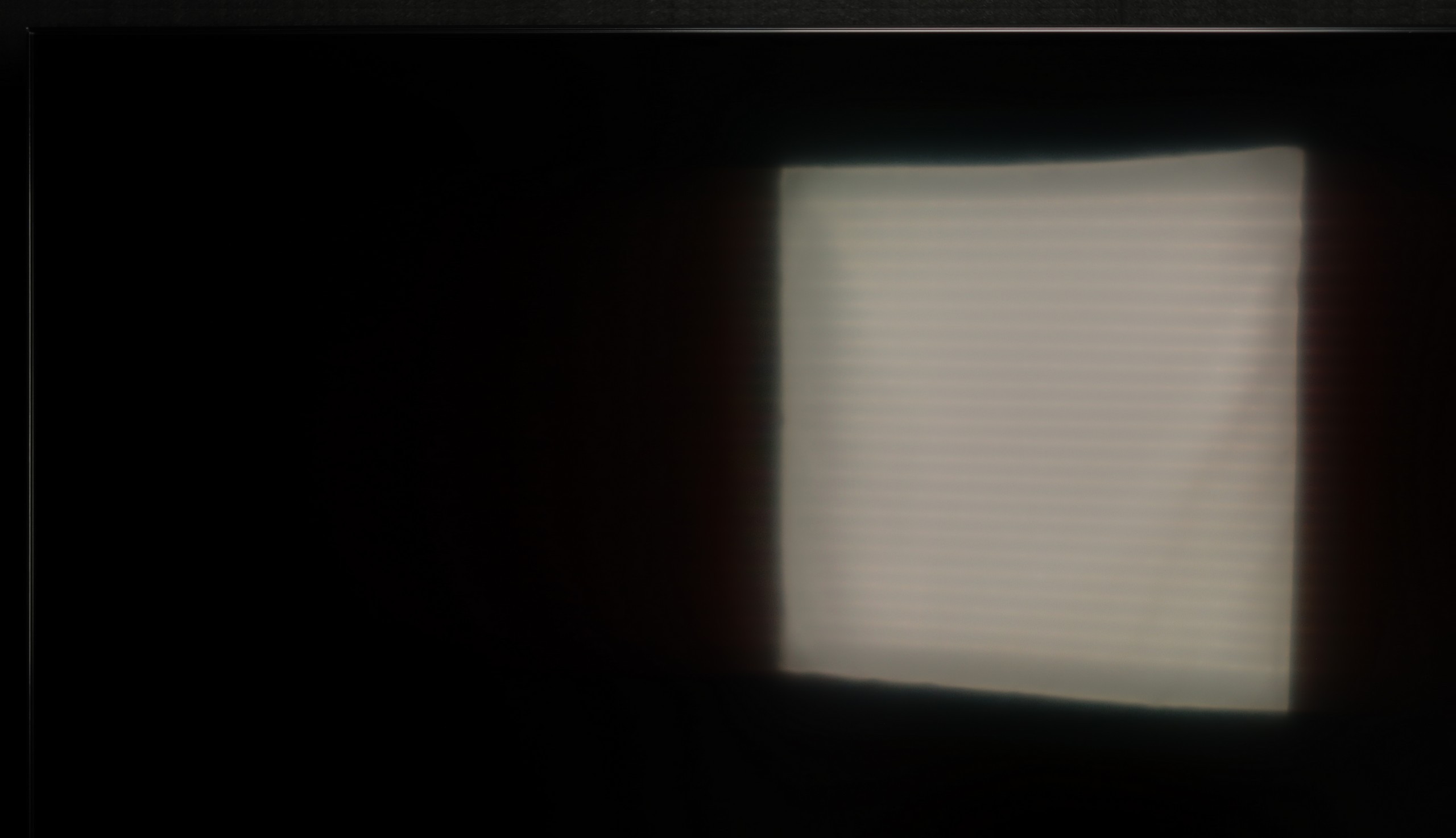

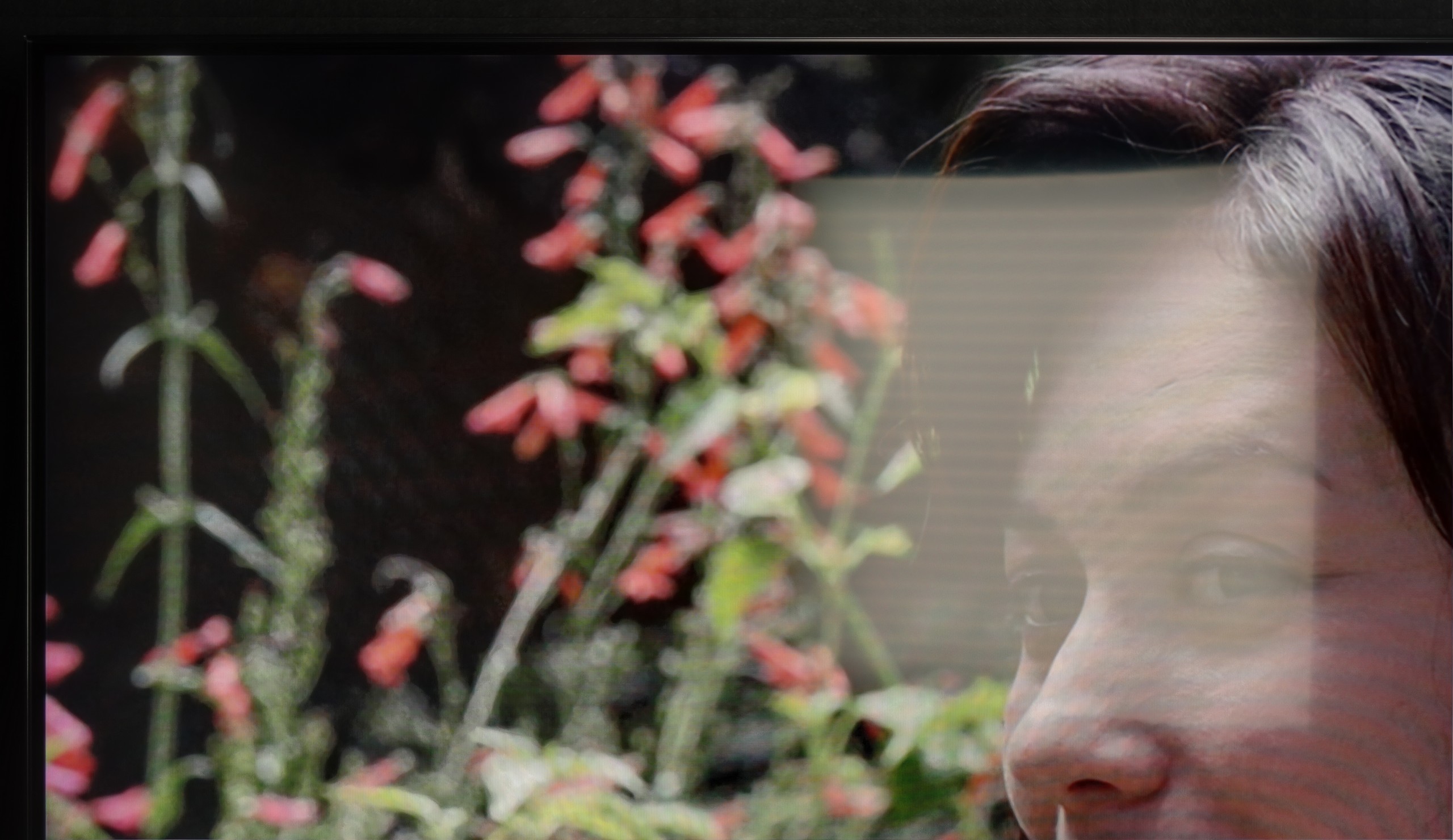
Matrix brightness
Average luminance SDR
Samsung QN80F 100" : 623 cd/m2
Hisense U7Q: 519 cd/m2
The U7Q performs quite well in a sunlit room. The brightness in SDR mode averages around 520 nits, which in practice means that even on sunny days, it's comfortable to watch television—without the feeling that everything is drowning in our reflections. Additionally, thanks to the satin coating on the panel, the television does a good job of reducing reflections.
The performance of the QN80F during the day is an interesting topic, as the 100-inch version differs from smaller sizes not only in scale but also in the coating used. Samsung opted for a different type of anti-reflective layer here, and it must be said that the effect is not as good as in the smaller models – reflections are a bit more visible, especially with strong light coming in from the window. On the other hand, the manufacturer found a way around this, as the 100-inch QN80F compensates with brightness. The average luminance in SDR content exceeds 620 nits, which practically provides a really strong reserve for viewing even in a heavily sunlit room. In everyday use, the difference between weaker reflection suppression and higher brightness is practically neutralized – the TV maintains readability and does not lose clarity even in the middle of the day. The end result is that although the coating in this version is not among the best, thanks to the high brightness, the QN80F performs better in bright conditions than one might expect.
Details about the matrix
Subpixel Structure:

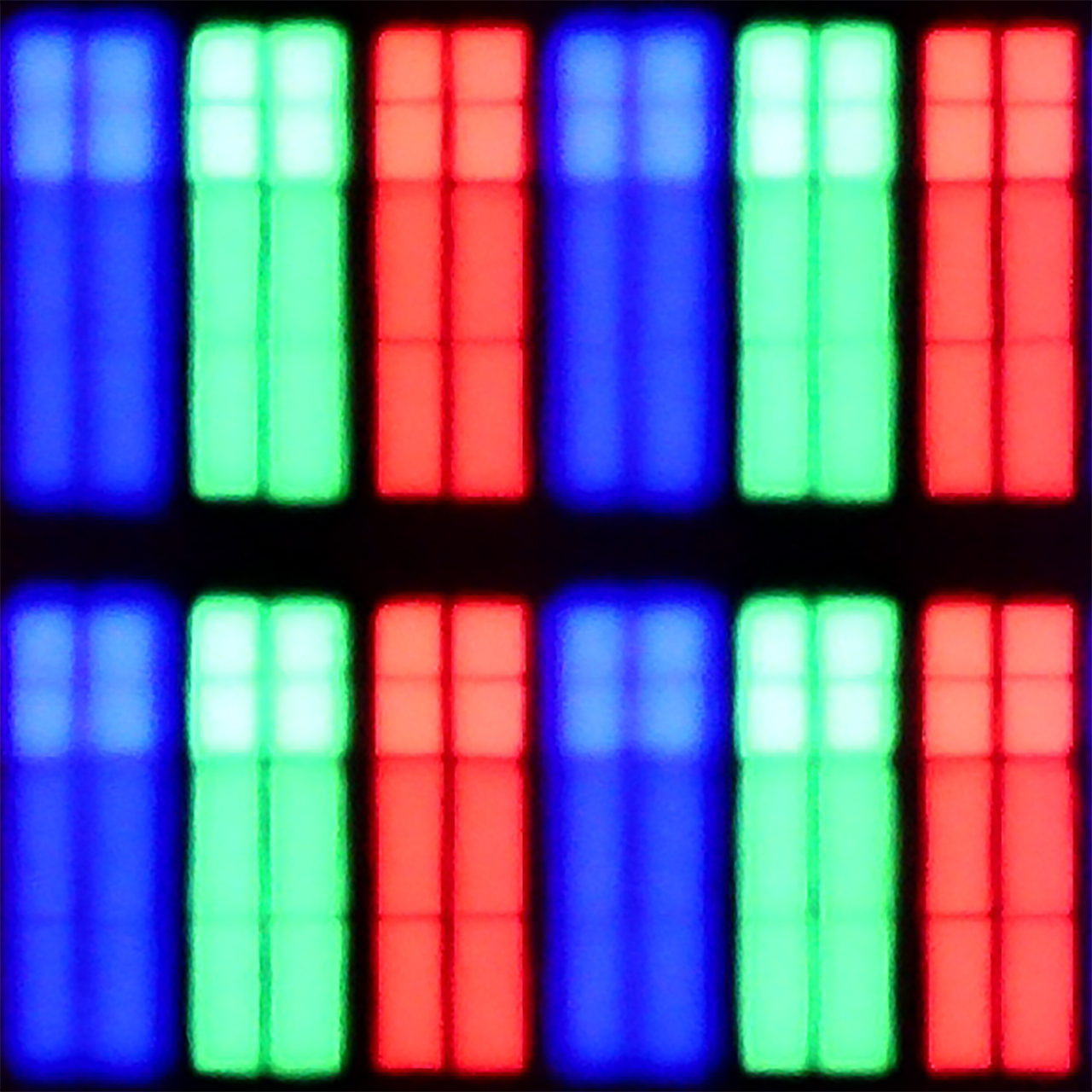
Panel uniformity and thermal imaging:

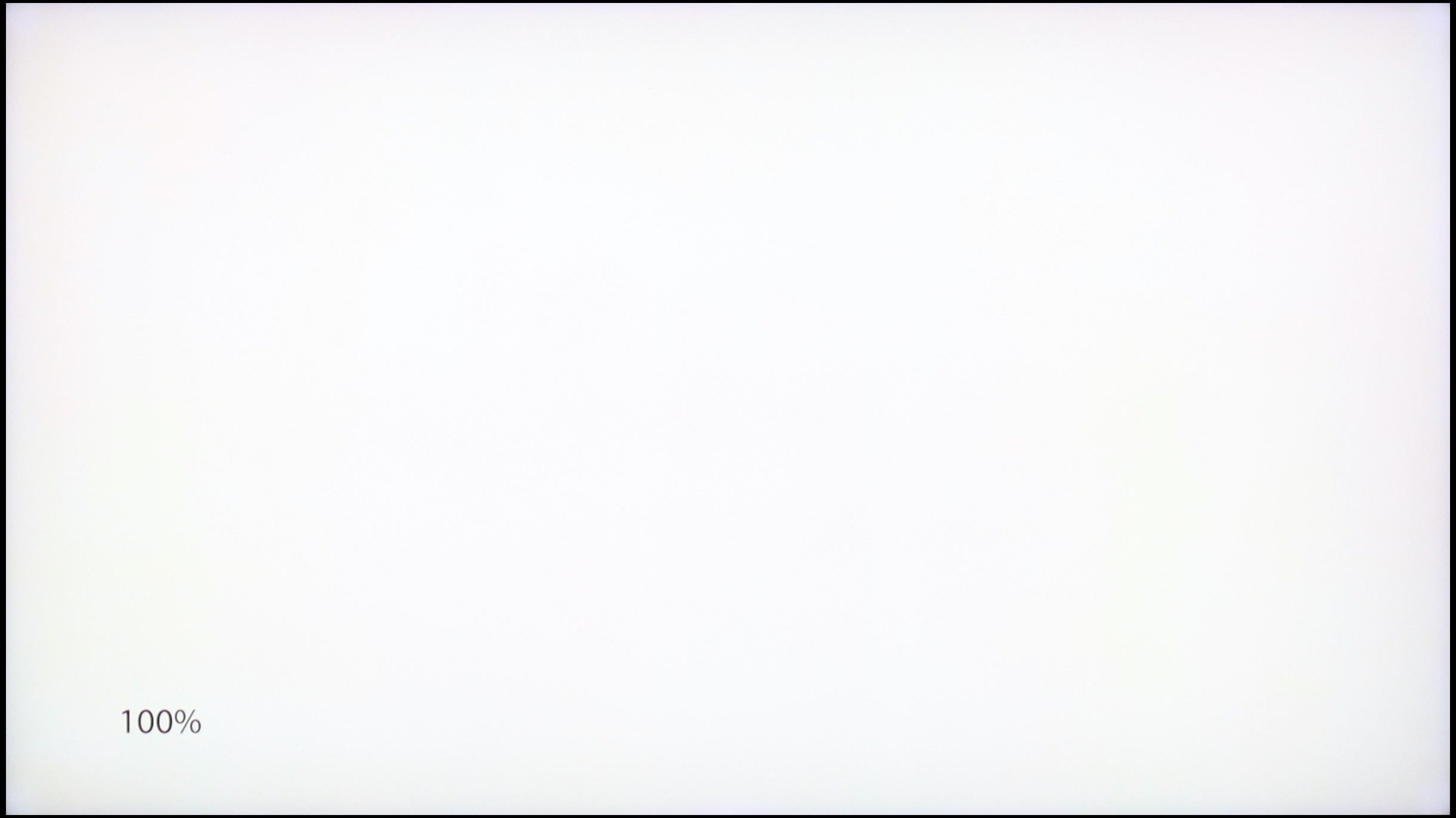
Hisense U7Q
Samsung QN80F 100"
TV features
8.9/10
7.7/10
- HDMI inputs2 x HDMI 2.0, 2 x HDMI 2.1 48Gbps0 x HDMI 2.0, 4 x HDMI 2.1 48Gbps
- Other inputsRCA (Chinch)
- OutputsToslink (Optical audio), eARC (HDMI), ARC (HDMI), Mini-Jack (Headphones)Toslink (Optical audio), eARC (HDMI), ARC (HDMI)
- Network InterfacesWi-Fi 2.4GHz, Wi-Fi 5GHz, Ethernet (LAN) 100MbpsWi-Fi 2.4GHz, Wi-Fi 5GHz, Ethernet (LAN) 100Mbps
- TV receptionDVB-T, DVB-T2, DVB-S, DVB-S2DVB-T, DVB-T2, DVB-S, DVB-S2, DVB-C
Classic features:
- Recording to USB (terrestrial TV)
- Recording programming
- Picture in Picture (PiP)
- RF remote control (no need to aim at the screen)
- Backlit remote control
- Teletext
- Audio only mode
- Bluetooth headphones support
- Simultaneous Bluetooth headphones & TV audio
Smart features:
- AirPlay
- Screen mirroring (Windows Miracast)
- Voice search
- Voice search in native language
- Ability to connect a keyboard and mouse




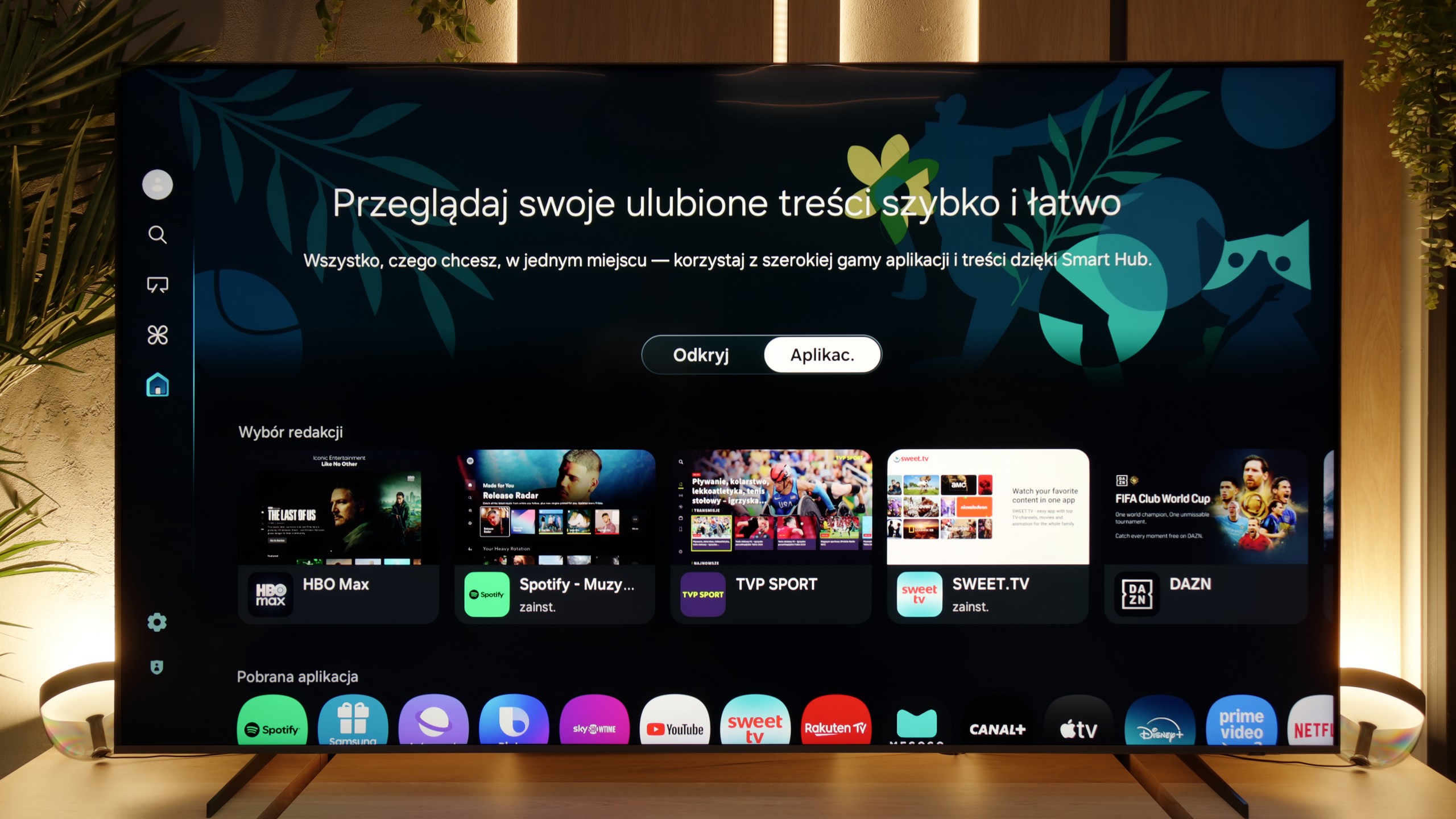
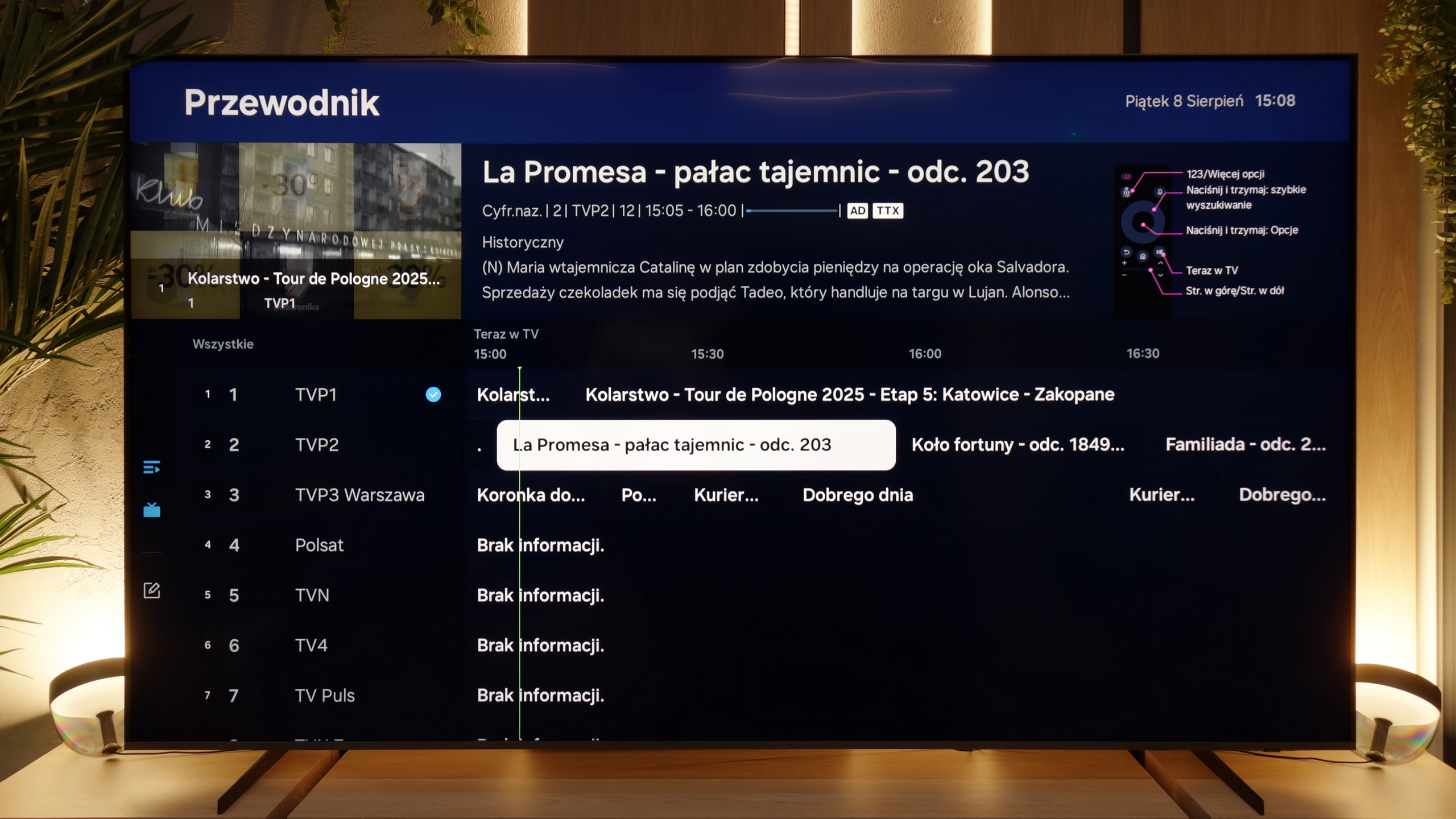
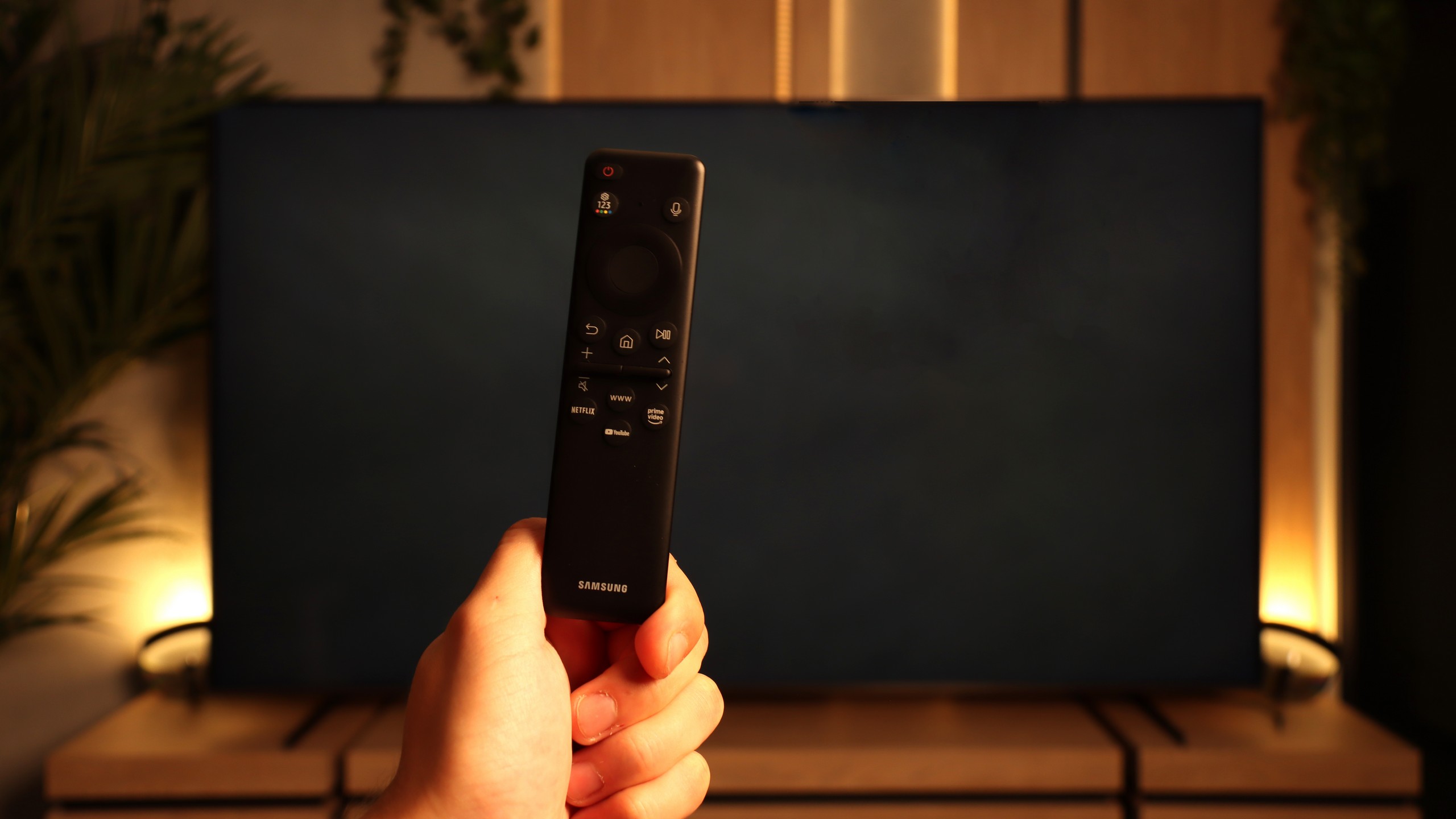
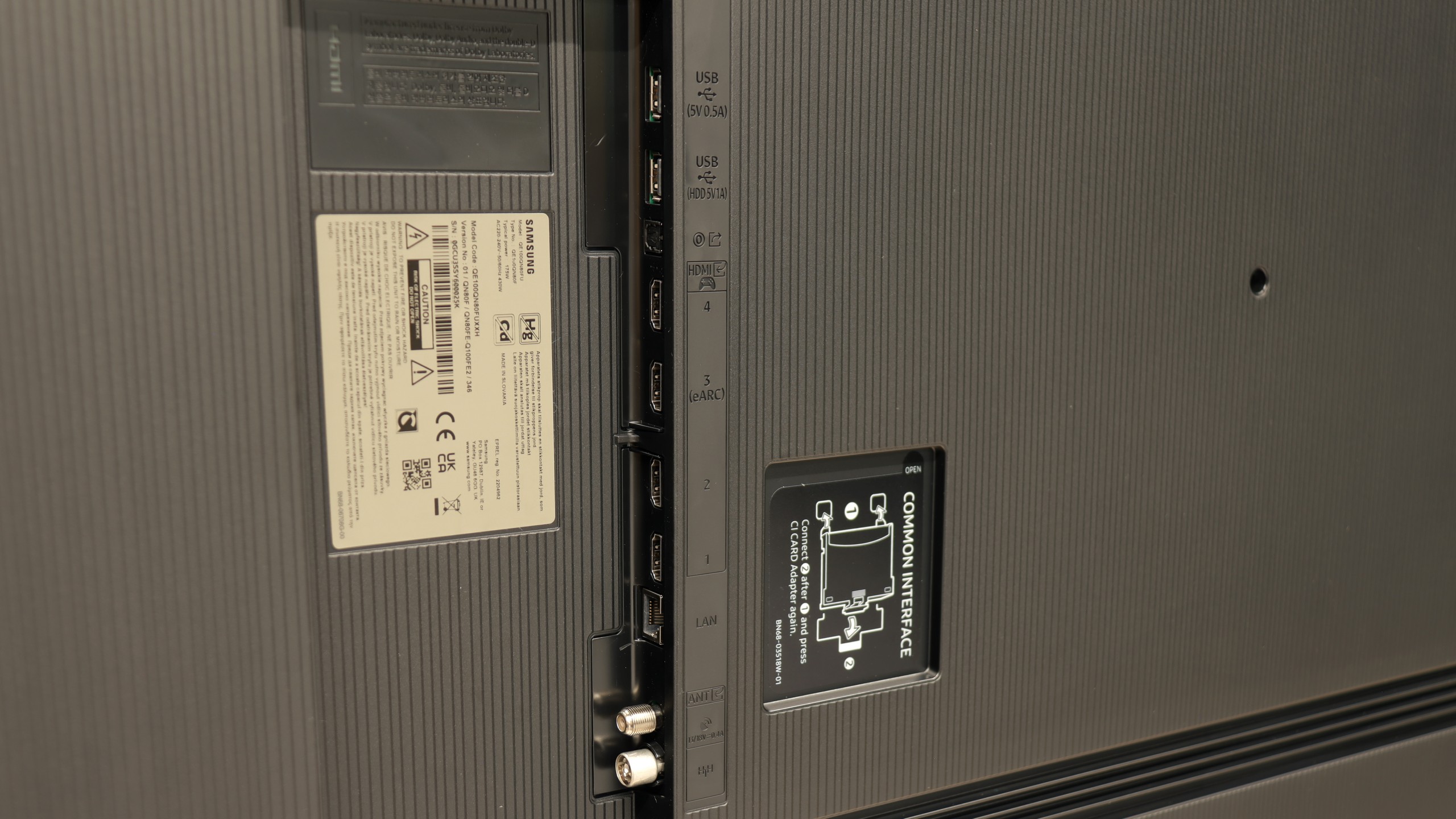
Classic Features of U7Q
Hisense U7Q has a lot to offer when it comes to classic TV features. You can record programs to USB, easily connect external devices via Bluetooth, and the interface – such as EPG – is clear and readable. It may sound like something mainly appreciated by seniors, but the truth is that the U7Q has practically everything needed for watching traditional television. The only thing missing here is the PiP (picture-in-picture) feature.
Smart TV U7Q: Vidaa
When it comes to Smart features, the U7Q runs on the proprietary VIDAA system. And I must admit – it works really smoothly. Voice search in Polish? No issues. AirPlay and screen mirroring? They work without any problems as well. Of course, one must be aware that VIDAA is a closed system, so – as is often the case – some popular apps, especially those related to music, are missing. Therefore, before purchasing, it’s worth checking if all the apps you use daily are available.
SmartTV Features: Tizen
When it comes to smart TVs, the QN80F has a lot to brag about. Samsung relies on Tizen, and it's clear that this system has been refined over the years. All the major streaming apps are available, voice search works, and AirPlay and Miracast are supported, so there are no issues streaming content from your phone or laptop. What's most interesting is that the TV can integrate other devices in the home into its ecosystem – thanks to SmartThings and support for the Matter standard, you can connect light bulbs, robot vacuums, and even devices from other brands. In practice, the QN80F becomes not just a screen for movies, but also a convenient control center for the entire apartment. Of course, it is still a closed system, so a few less popular apps might be missing, but let's face it – for 99% of users, it has everything they need and even more.
Classic Features
The traditional features on the QN80F perform quite well, although a few things are missing. On the plus side, there's PiP, or picture-in-picture – a rarely found feature that can still be very practical. Additionally, we have EPG, working teletext, and Bluetooth support, which makes it easy to pair headphones or a soundbar. On the flip side, there's no USB recording from the built-in tuners, and it lacks a remote with a classic numerical keypad. Instead, we get Samsung's characteristic small remote, which may initially seem too minimalist. However, it must be acknowledged that this unassuming gadget hides a lot of capabilities and can control other devices, such as satellite receivers, consoles, or Blu-ray players, so in practice, one remote is enough to manage the entire setup in the living room.
Playing files from USB
8.2/10
9/10
Supported photo formats:
Maximum photo resolution:

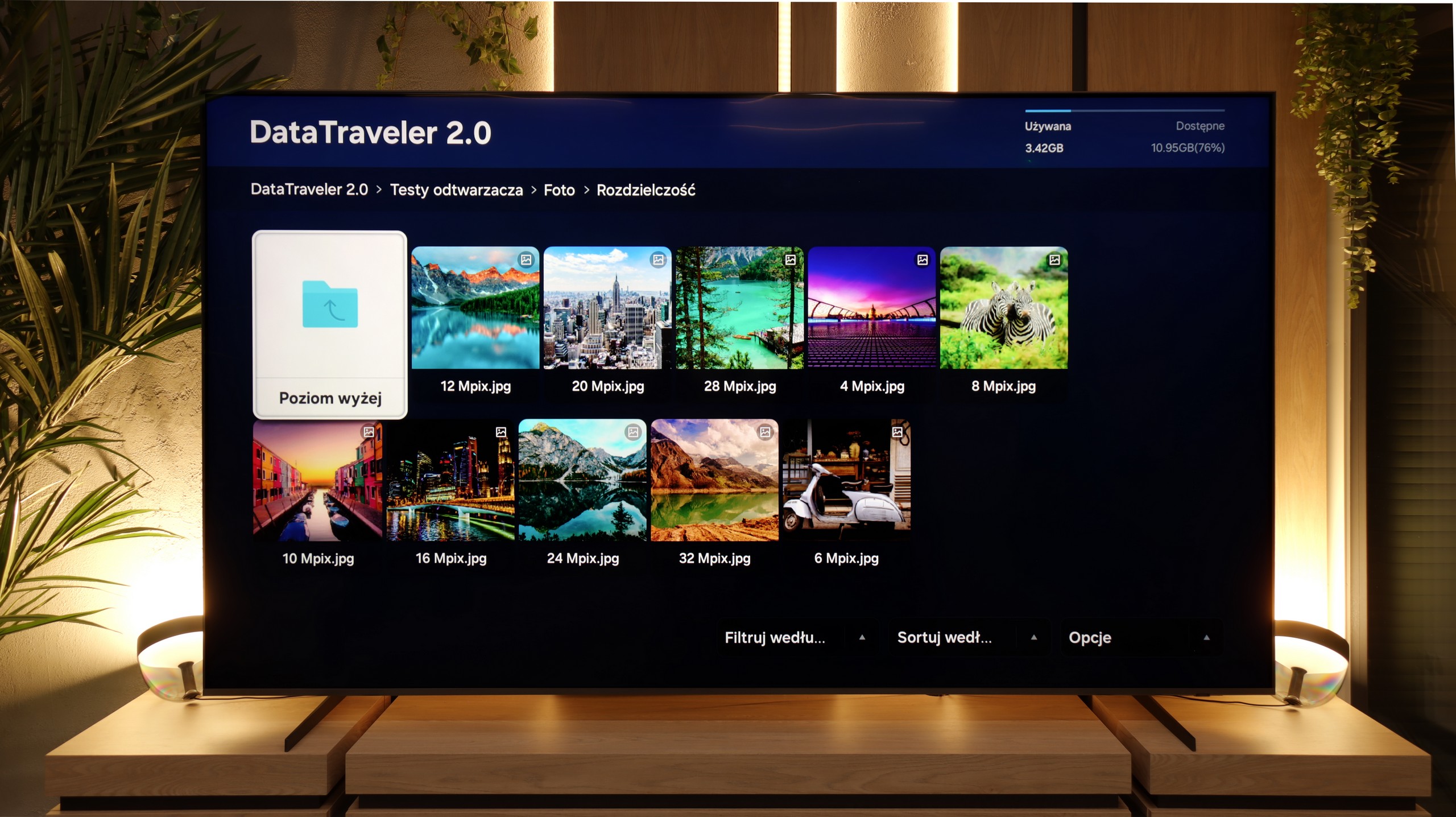
The built-in player in the U7Q fully meets the needs of most future users. The television seamlessly supports Polish characters and most popular video, audio, and photo formats. If we had to nitpick, it would be only about the limited support for certain photo resolutions – there are occasions when files from the camera are not displayed correctly. It's worth keeping this in mind if you plan to present photos directly from a DSLR or phone.
The built-in media player in the QN80F performs quite decently, but it's hard to say it's fully extravagant. It handles movies quite well – it can easily play popular video formats, from simple MP4s to heavier containers. It's not at the level of all-in-one applications like VLC, but it's sufficient for everyday viewing. Especially since the last update fixed the issue with handling various subtitle formats in movies. The situation with photos is a bit worse. Support essentially ends at JPG and BMP, so if someone keeps their photo archive in another format, they have to rely on an additional application or will be forced to convert the photos.
Apps
7.7/10
8.7/10














































Sound
7.2/10
6.7/10
- Maximum volume82dB87dB
- Dolby Digital Plus 7.1
- Dolby True HD 7.1
- Dolby Atmos in Dolby Digital Plus (JOC)
- Dolby Atmos in Dolby True HD
- DTS:X in DTS-HD MA
- DTS-HD Master Audio
Sound is one of the major advantages of the U7Q. The TV sounds really pleasant – there is a slightly noticeable bass, good tone balance, and it is definitely something more than just for "everyday news watching." You can easily play music on it and just enjoy the sound – of course in an entertaining way, not an audiophile one 😉. It also deserves high praise for full support for the most important audio codecs, which worked flawlessly. A small exception is Dolby Atmos in TrueHD version, which did not fully play when connected to a home theater, so if someone uses this format – it's worth keeping in mind – it may be a software bug.
The QN80F performs well on its own – with a slight bass, some space thanks to Dolby Atmos, and clear enough that daily watching of movies or series isn't exhausting. But with a 100-inch screen, it practically begs for a soundbar. Only then will the scale of the image and sound begin to match, as while the television does a decent job, it's hard to expect built-in speakers to fill such a large living room with sound.
Acoustic Measurements
82dBC (Max)
75dBC
87dBC (Max)
75dBC


